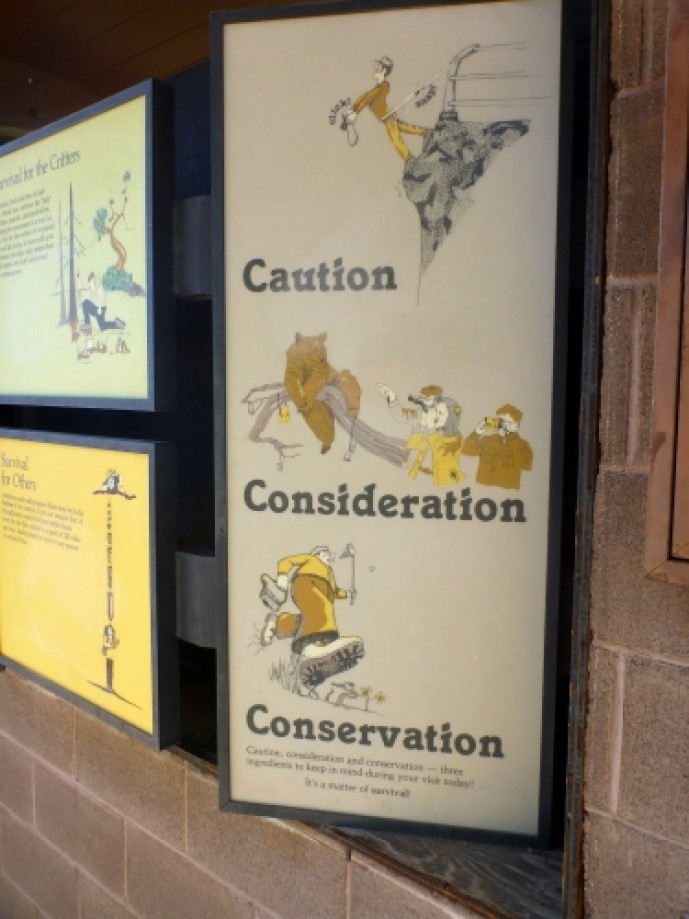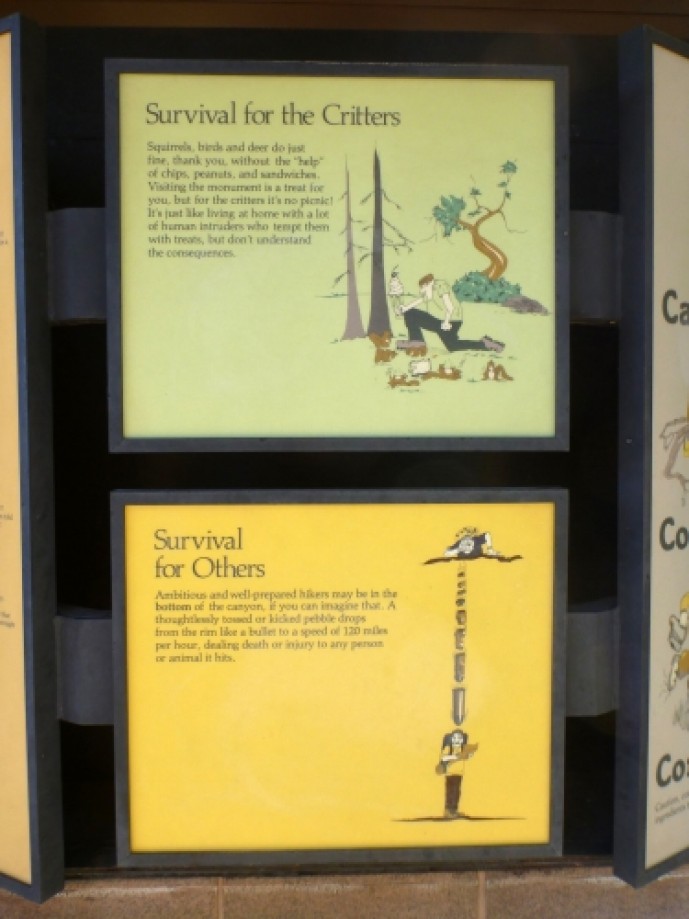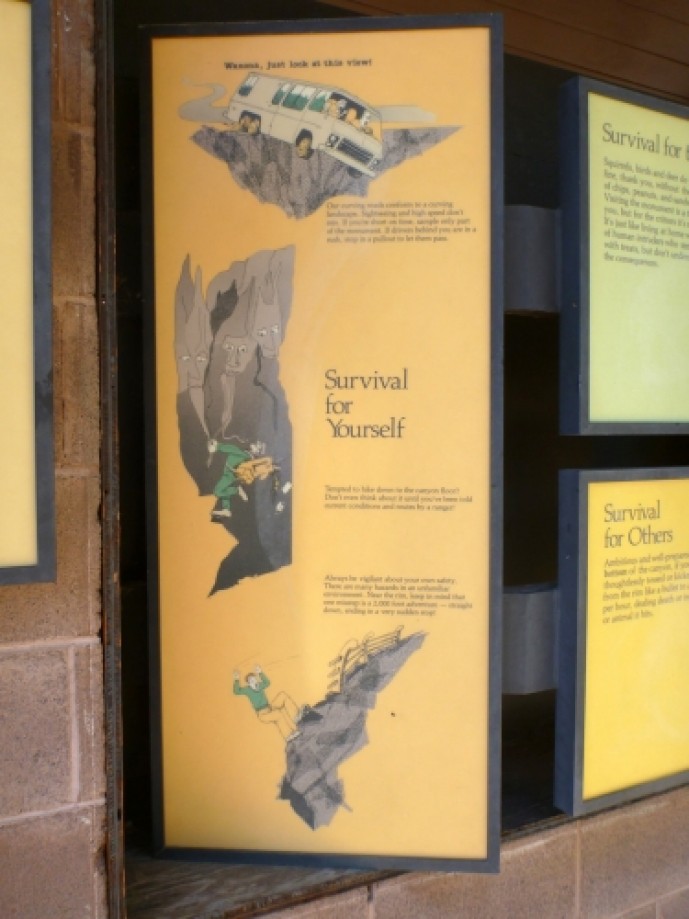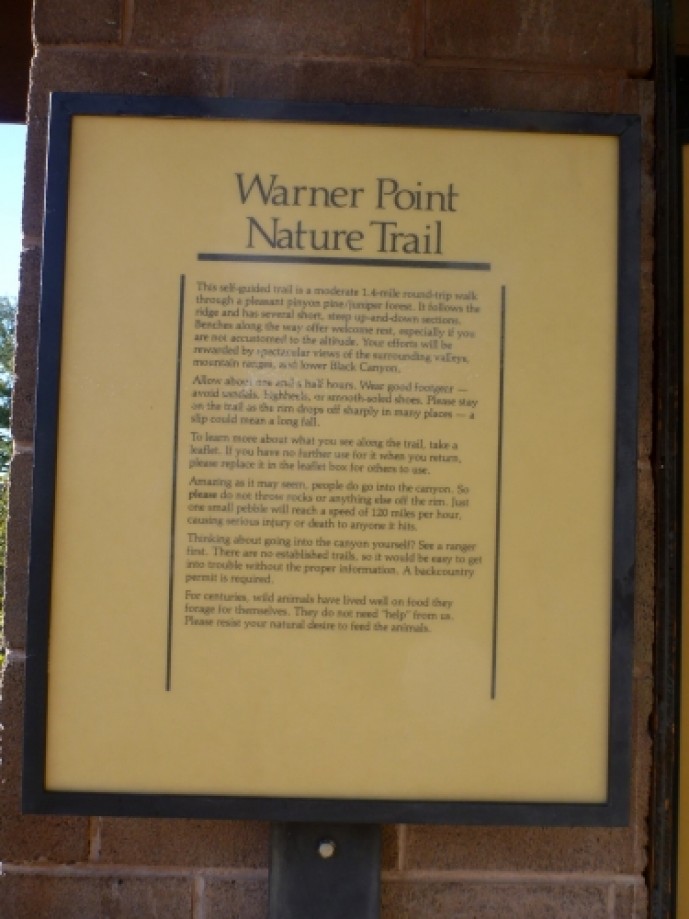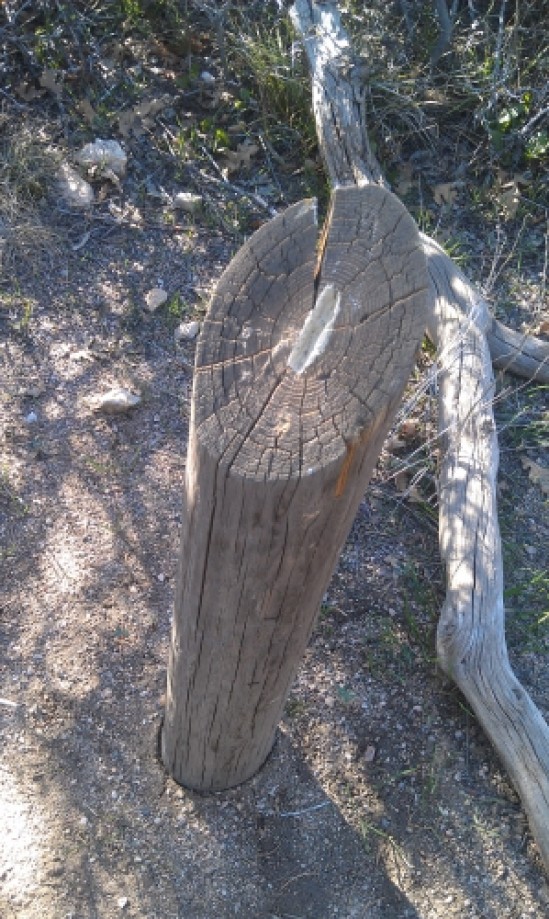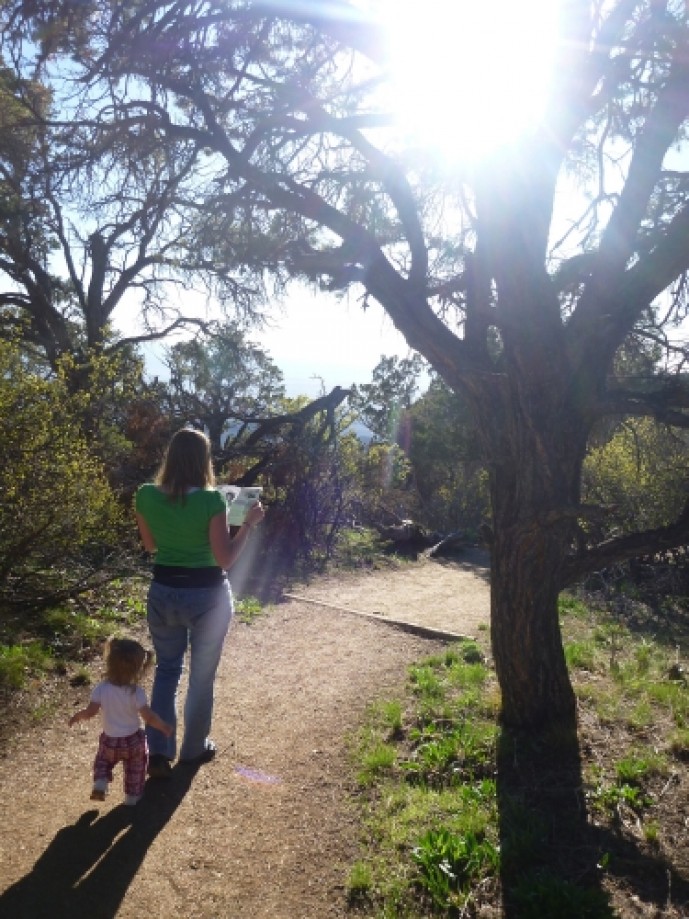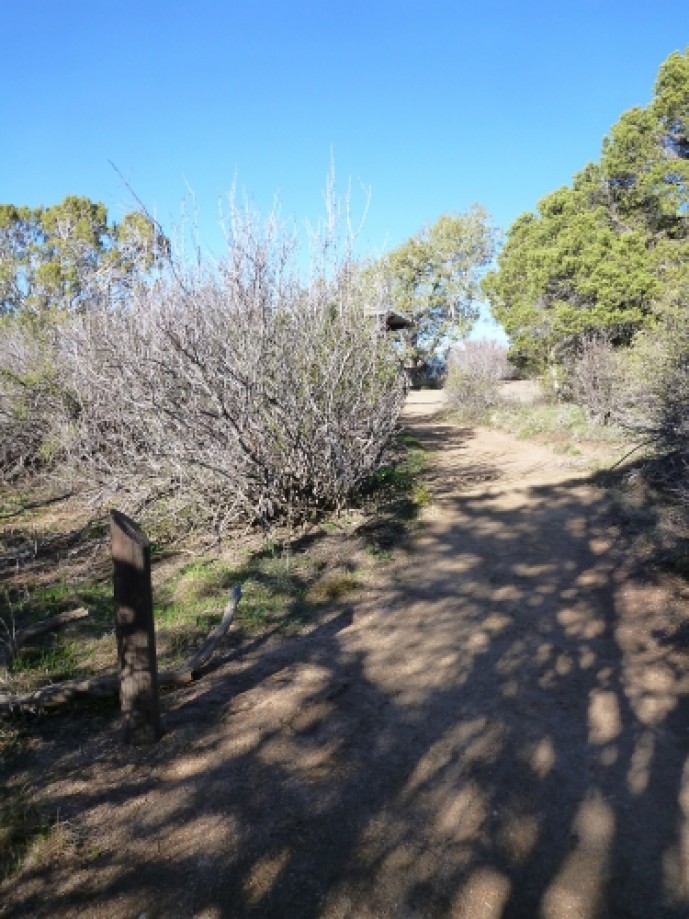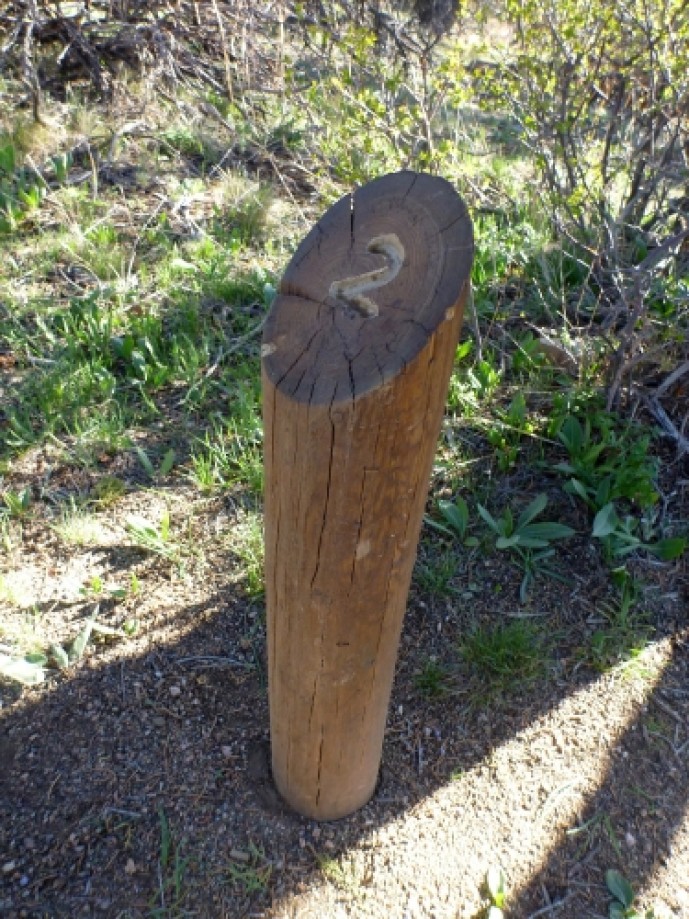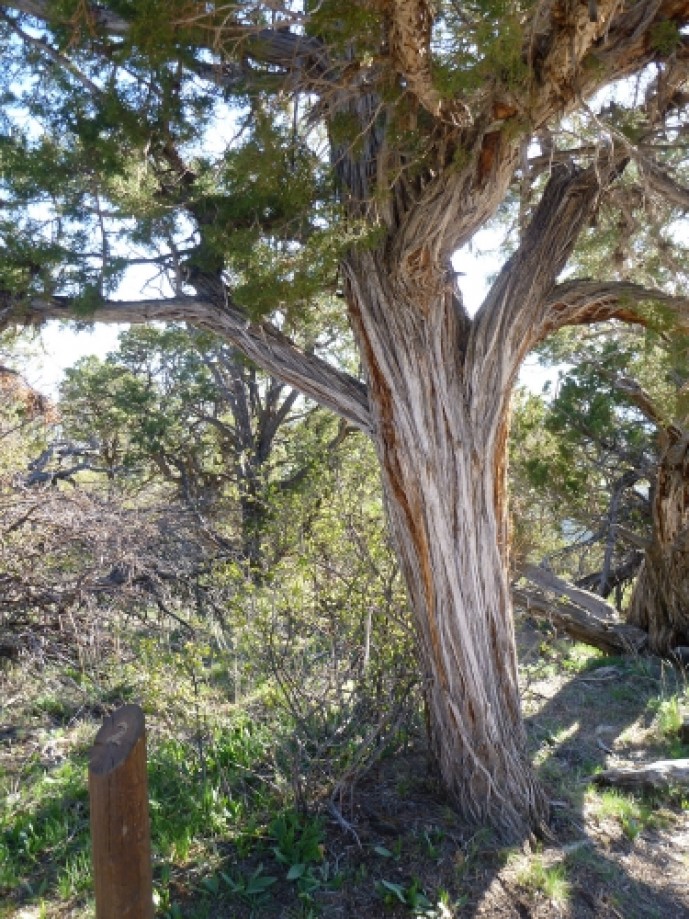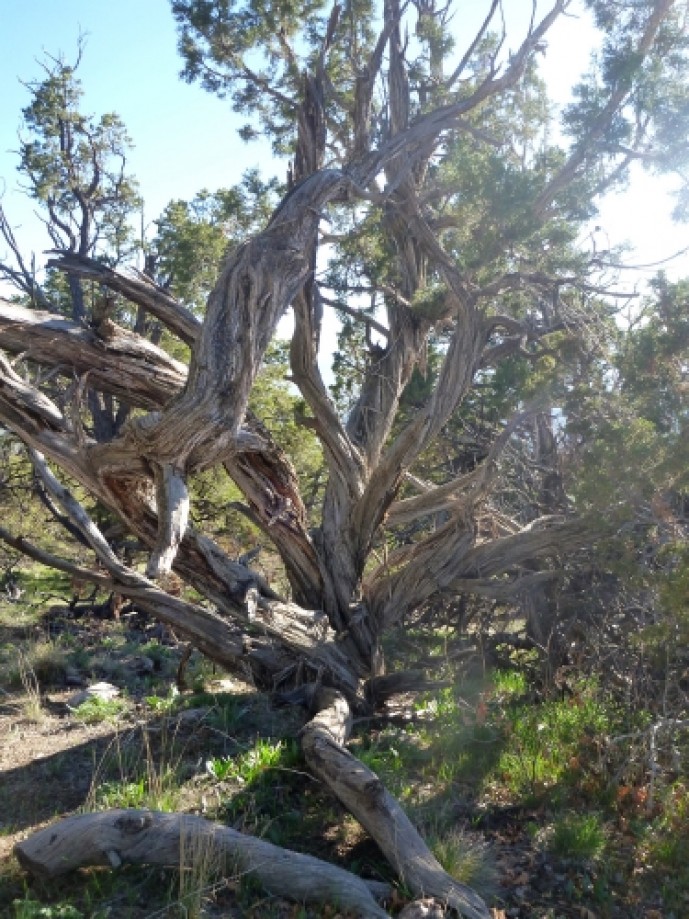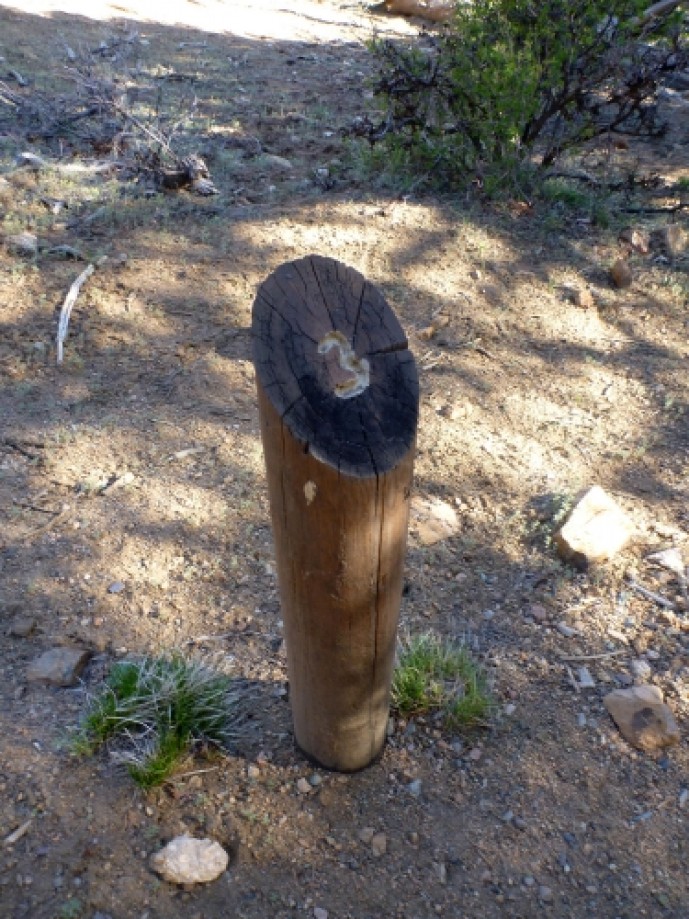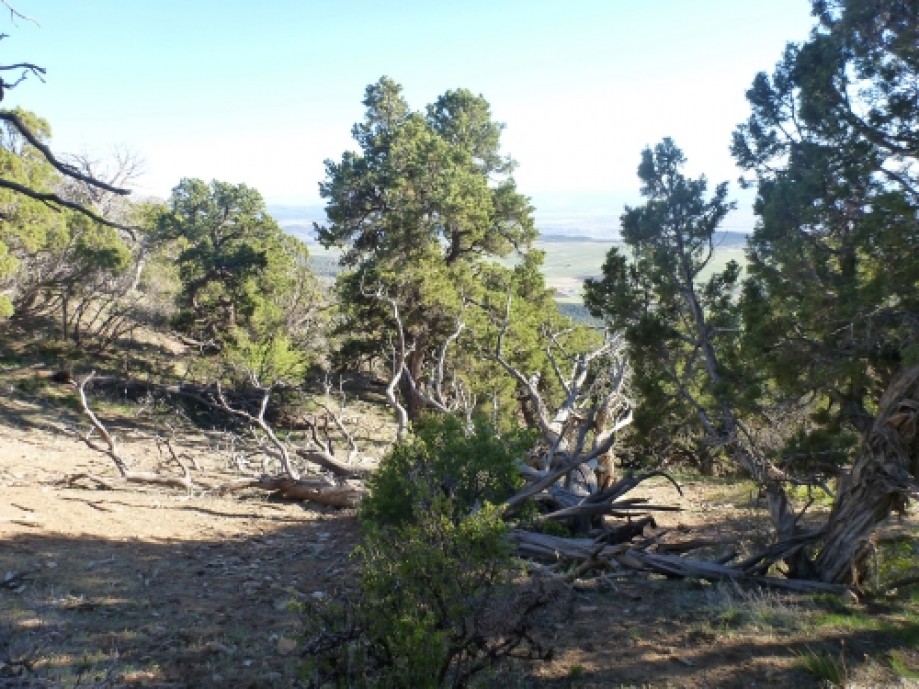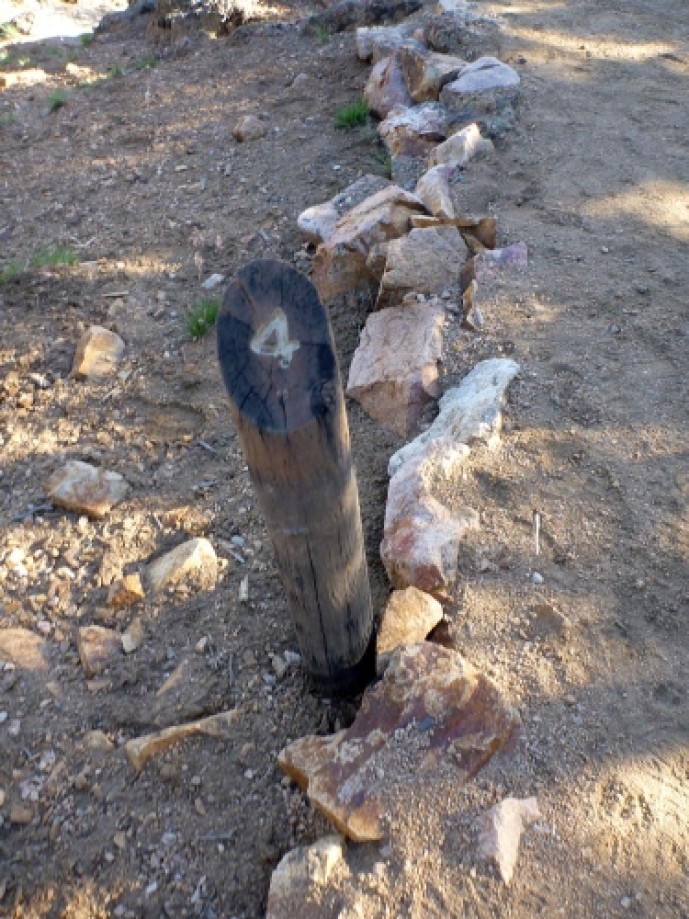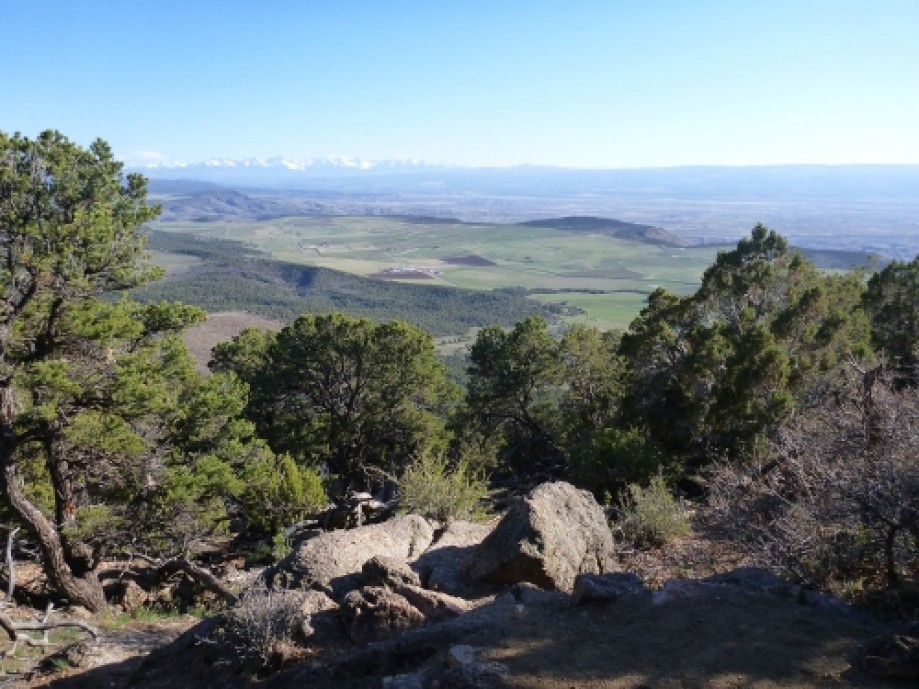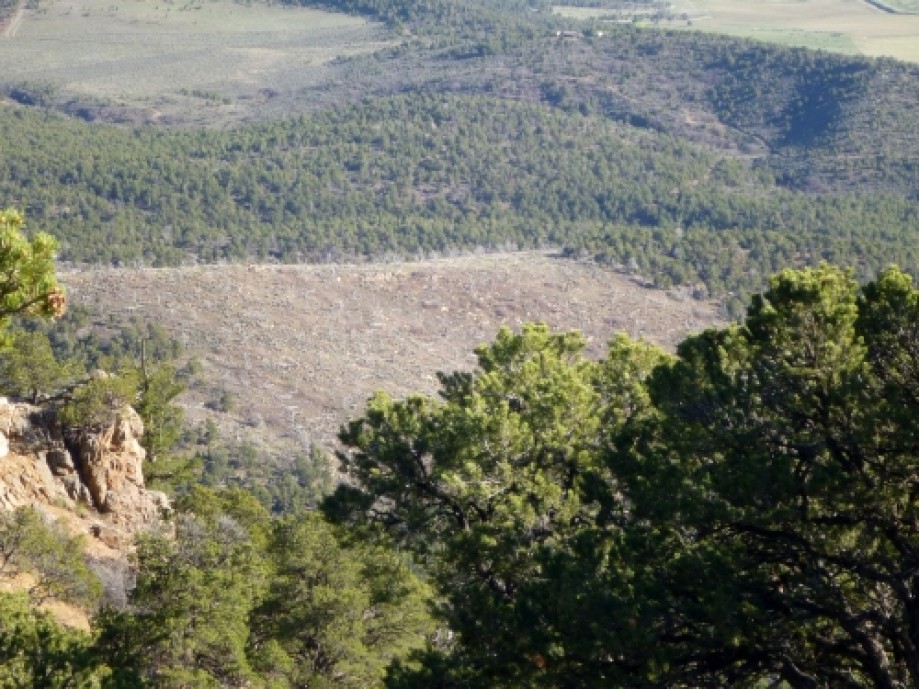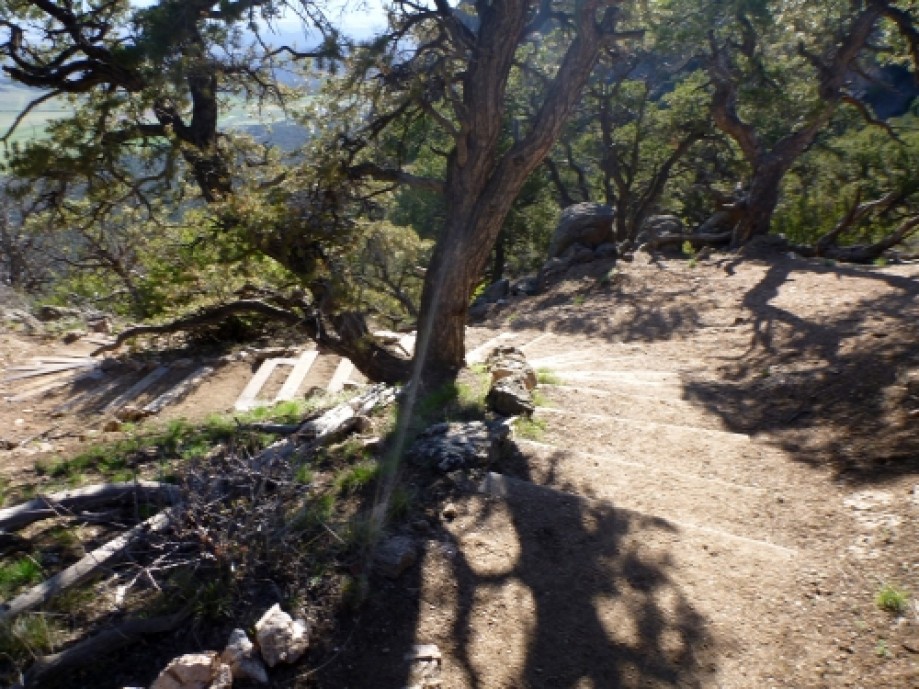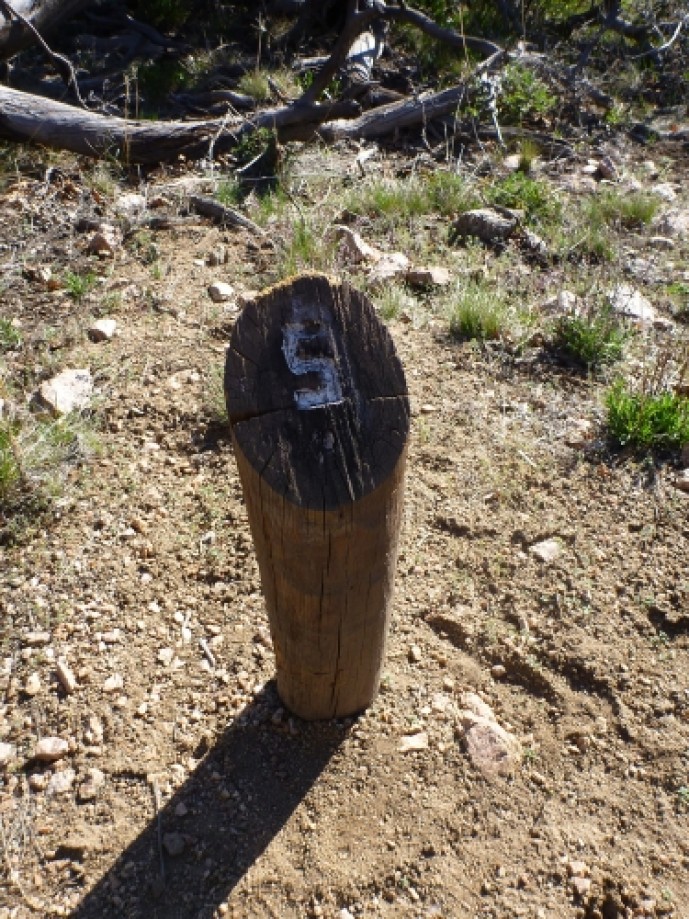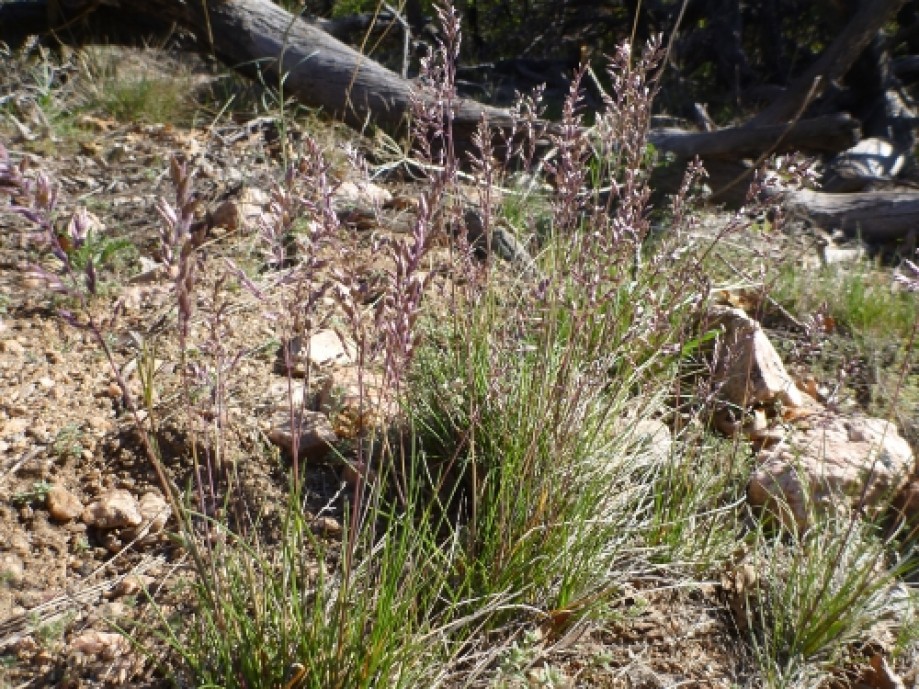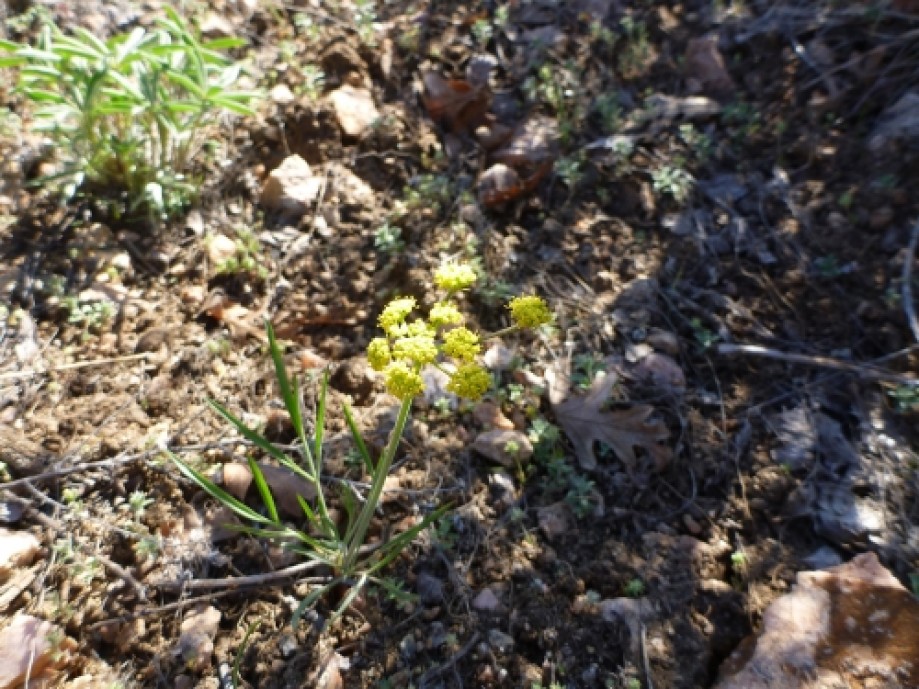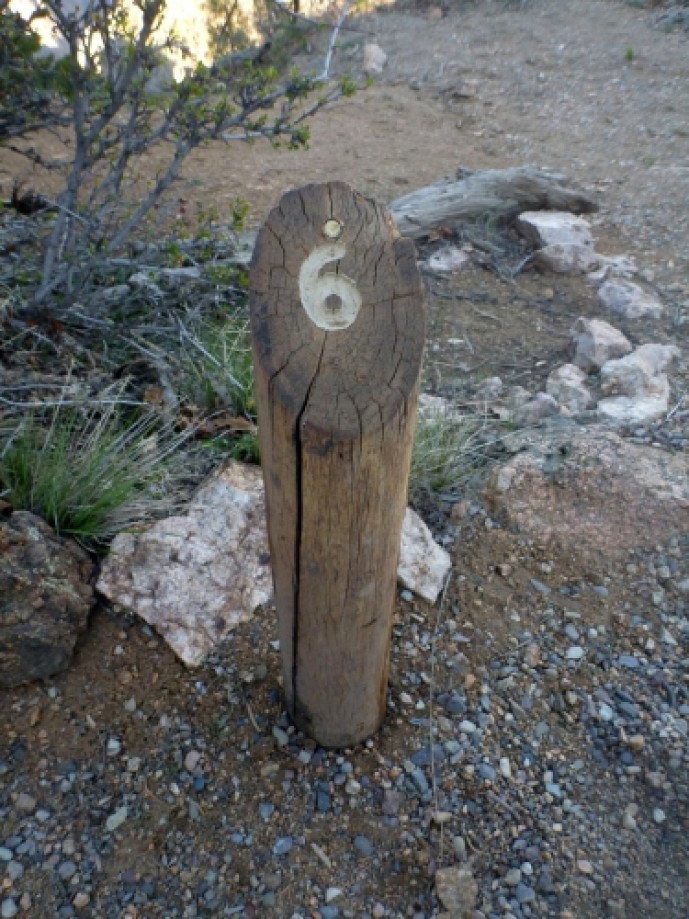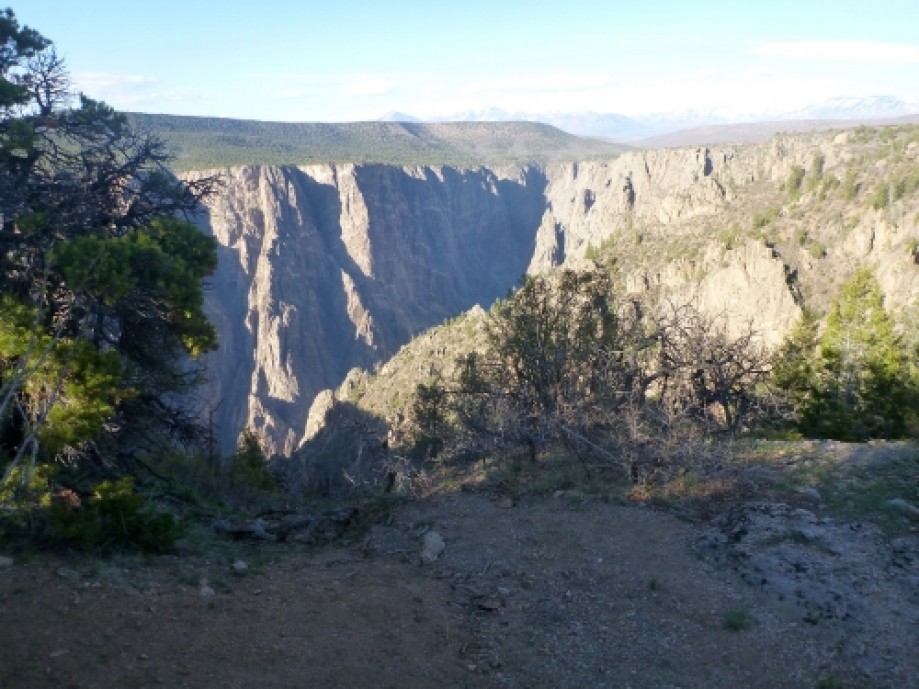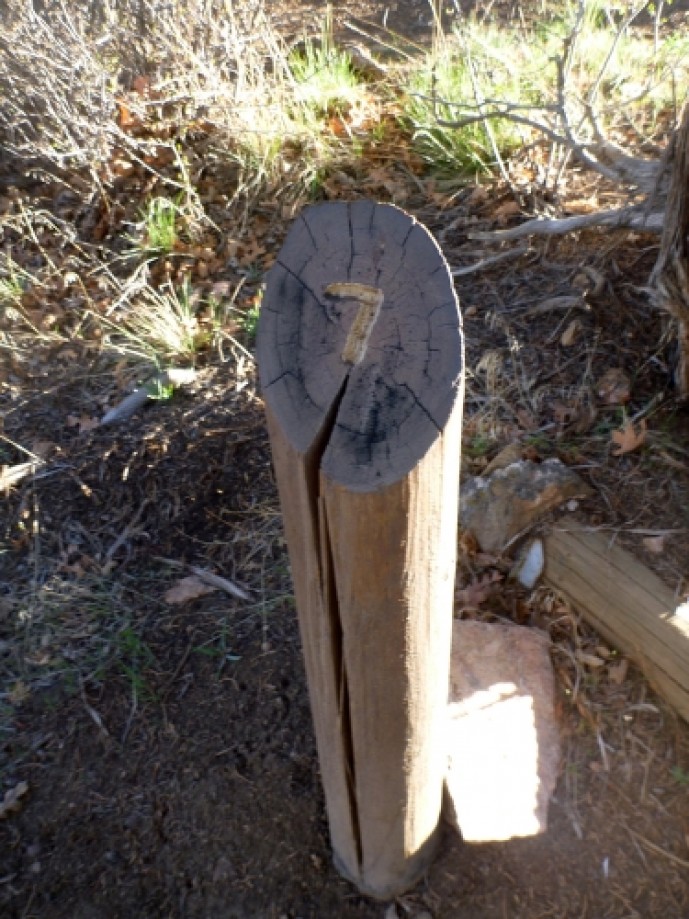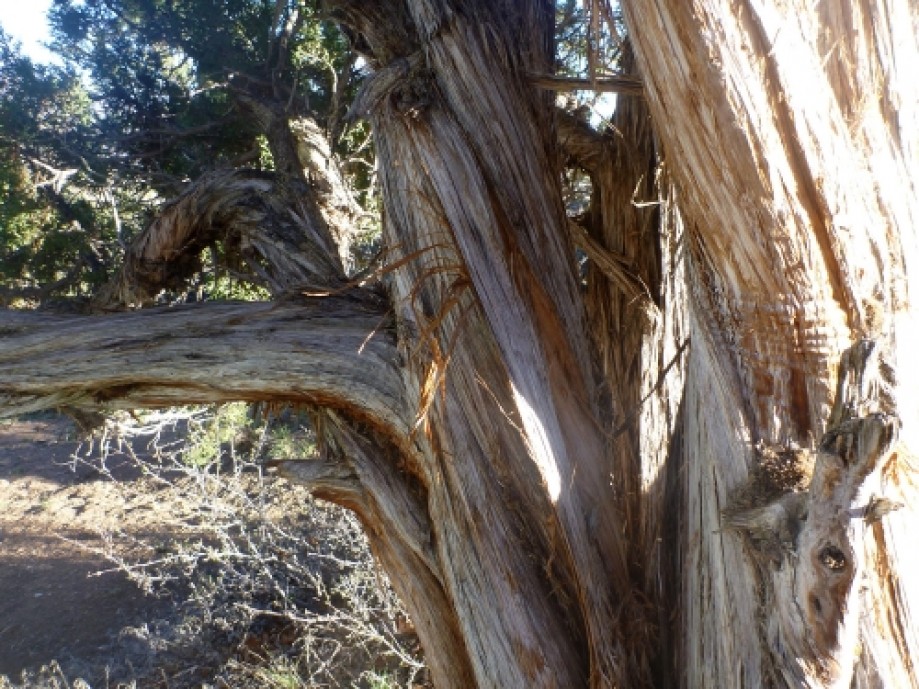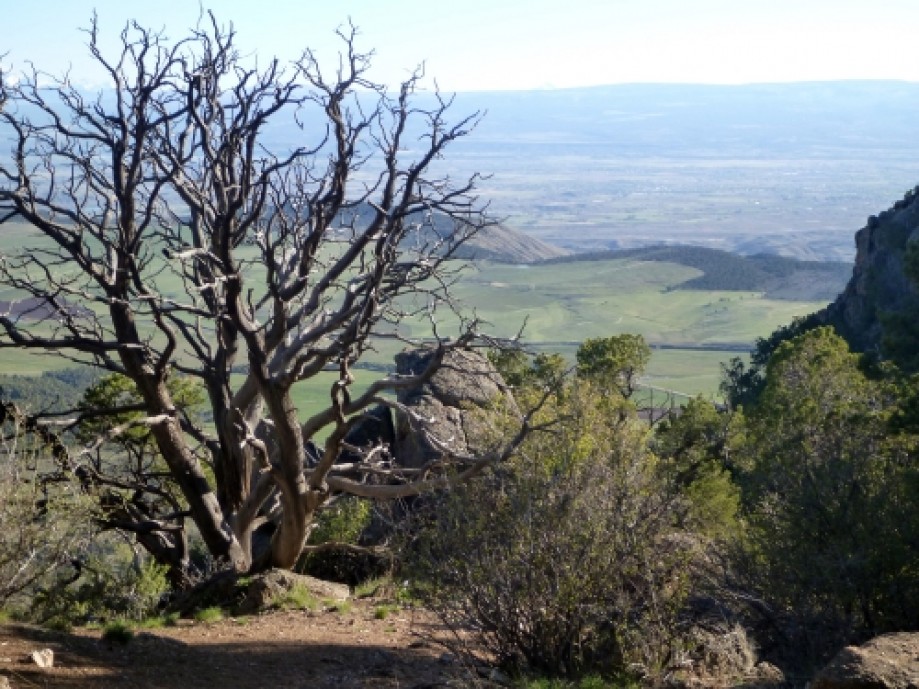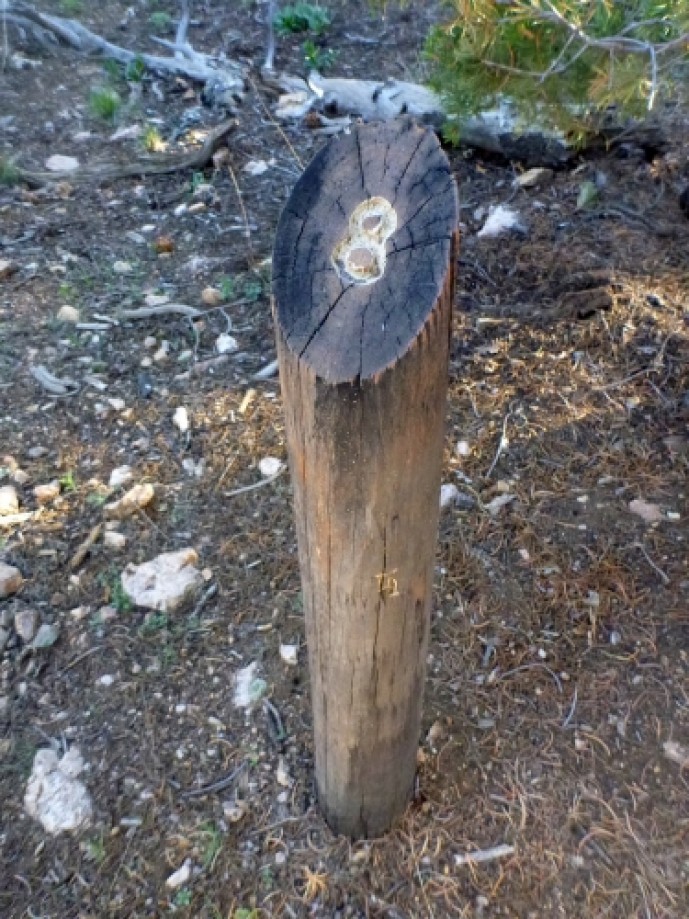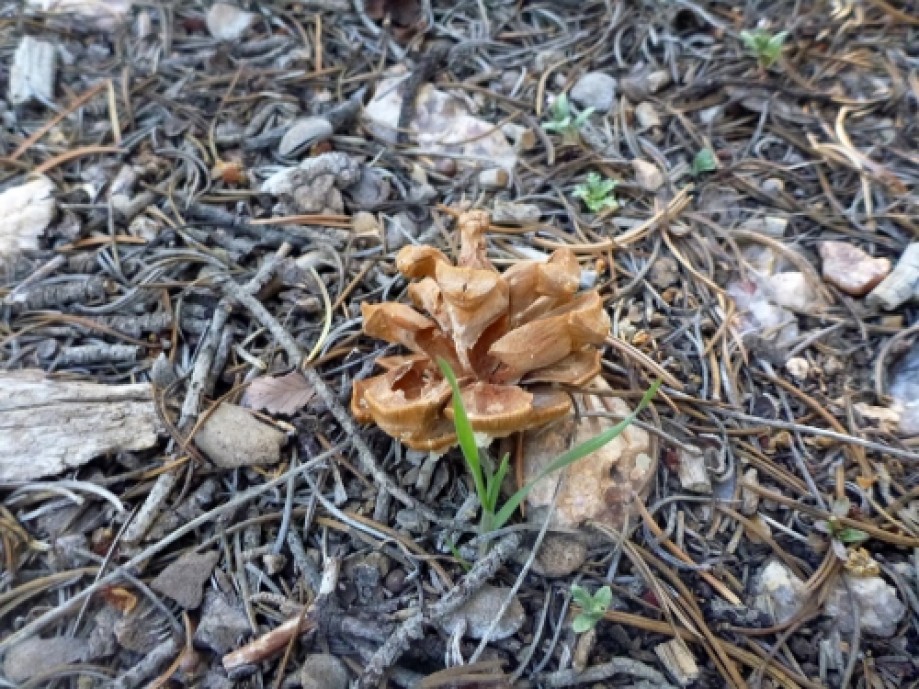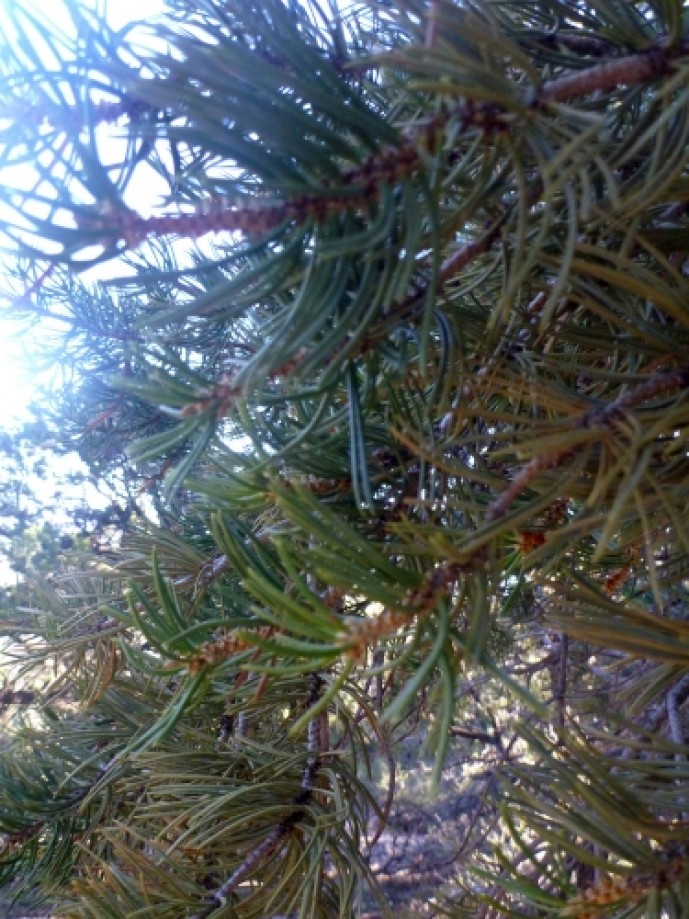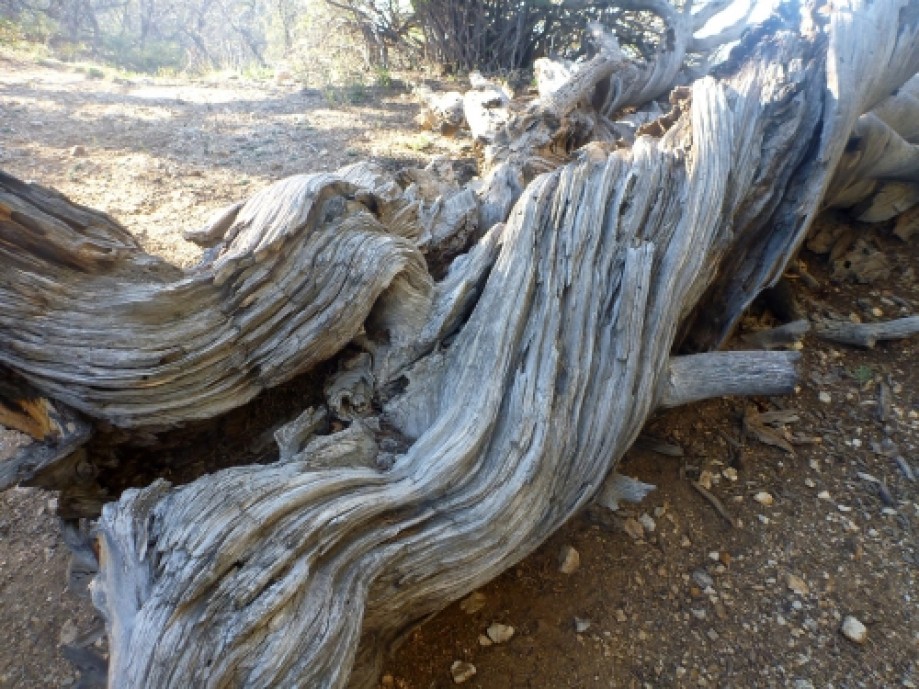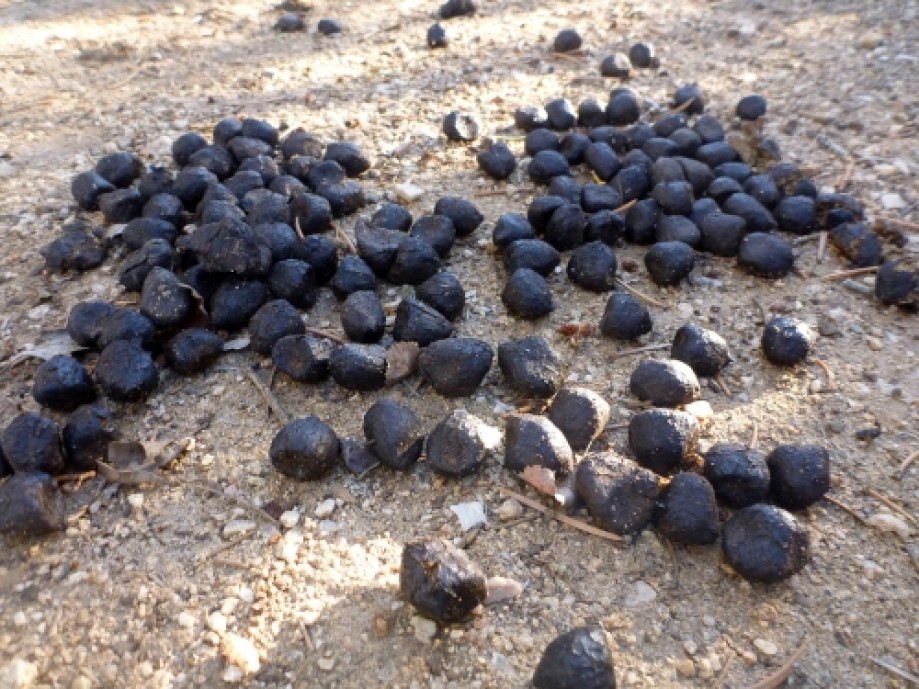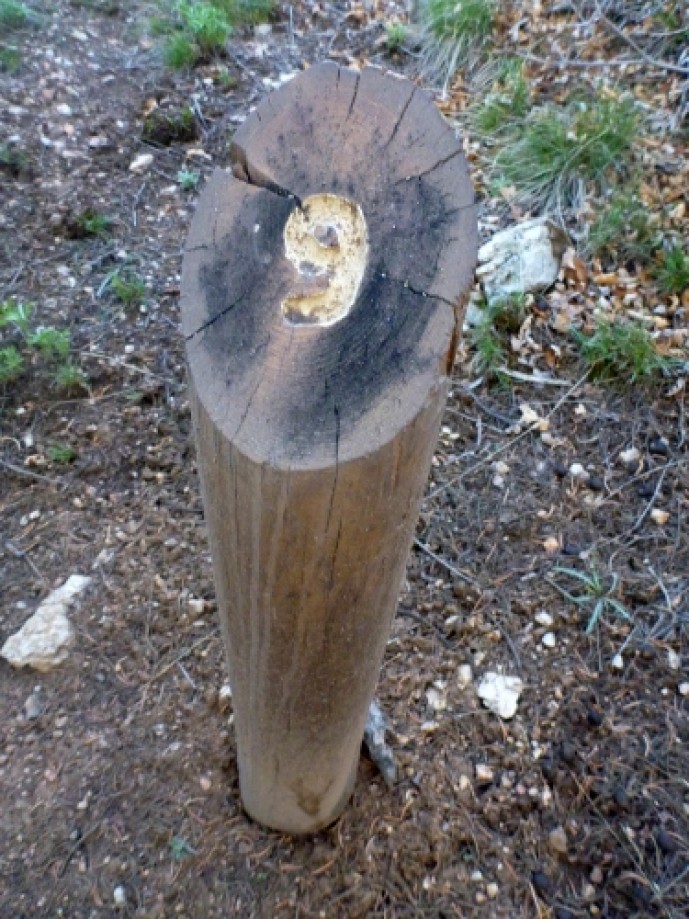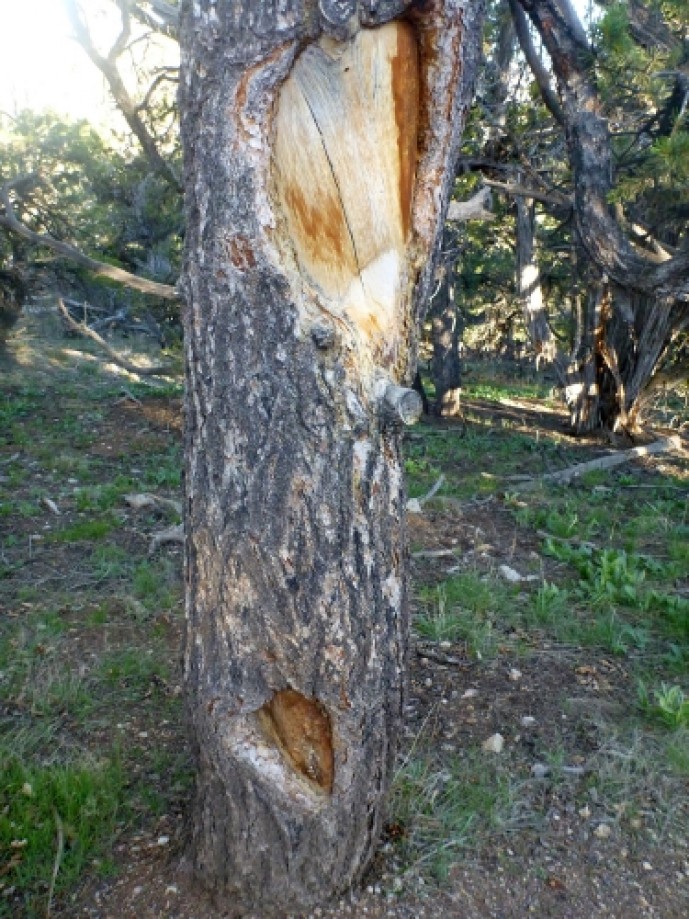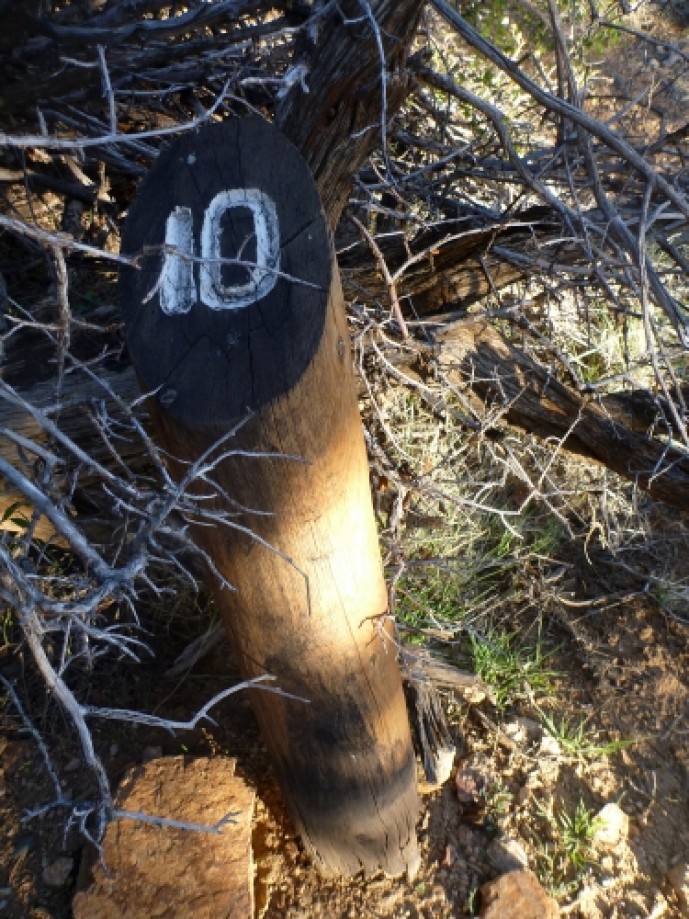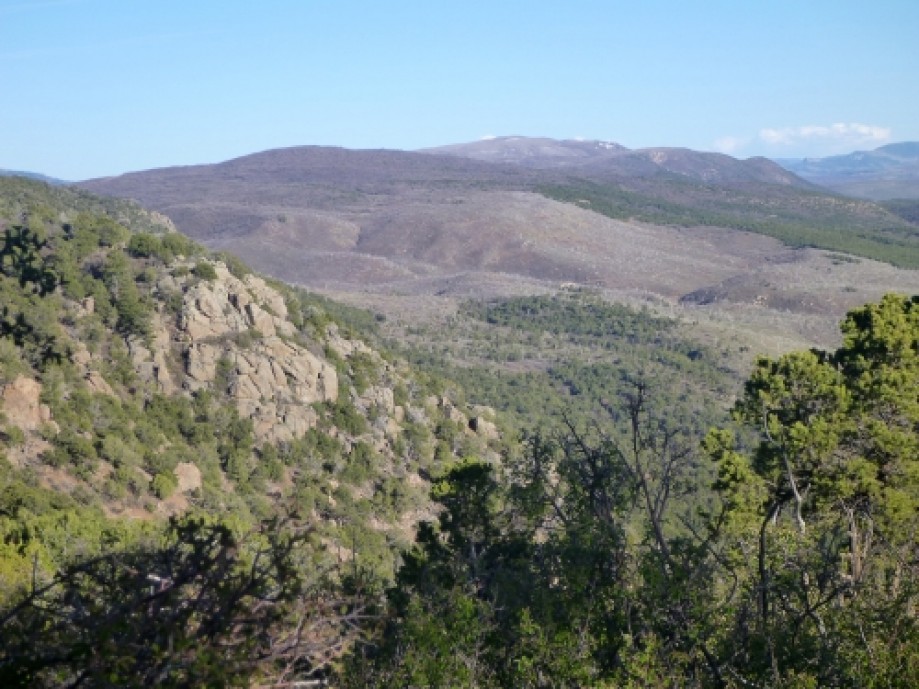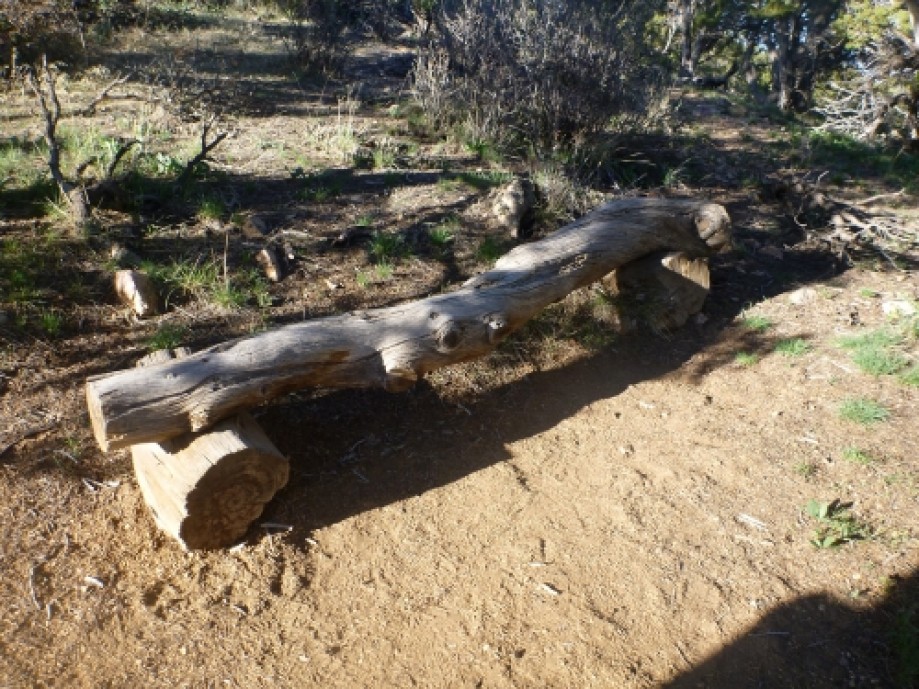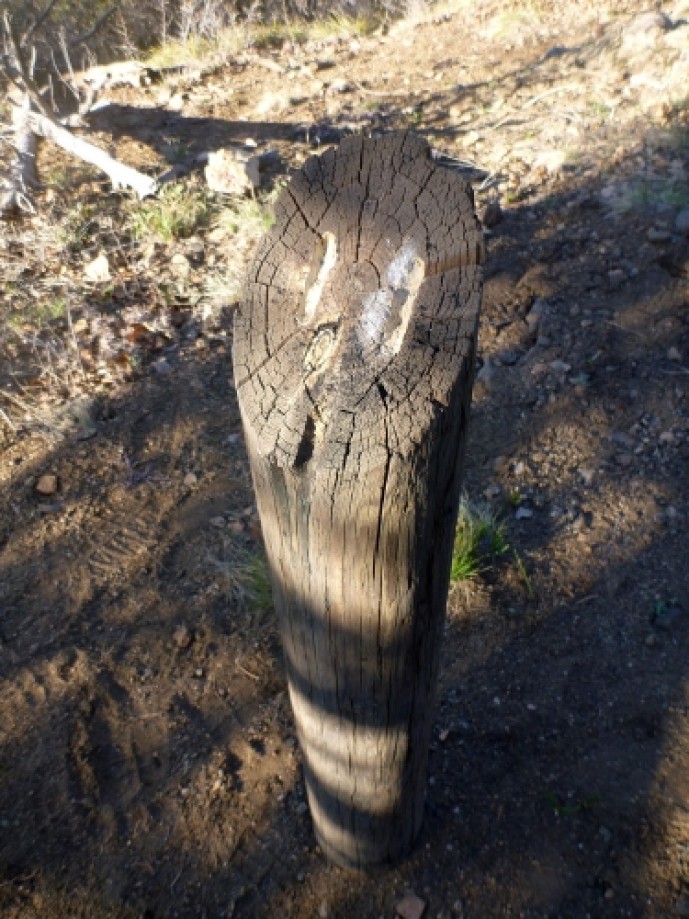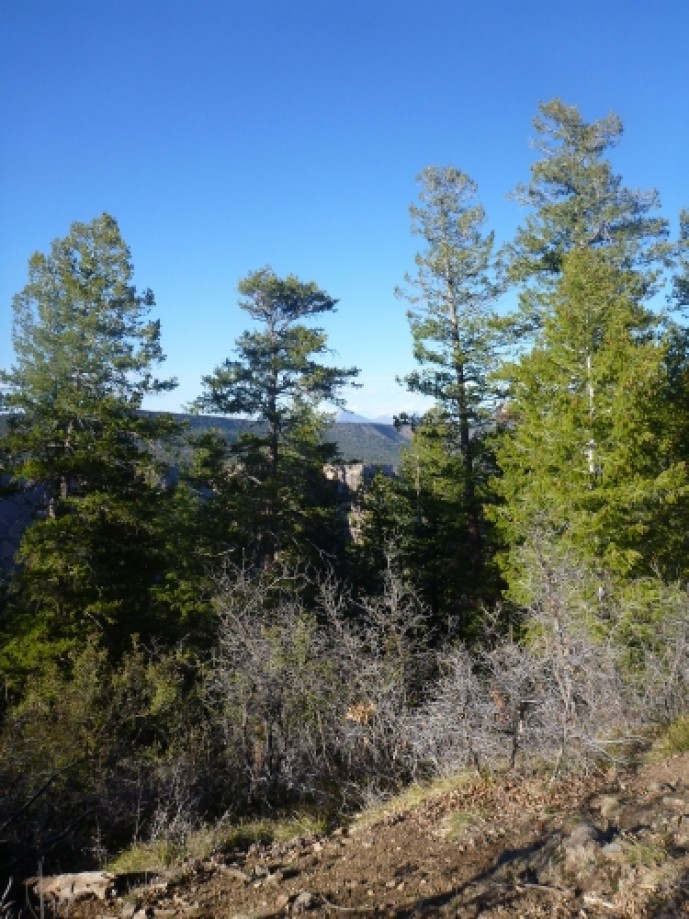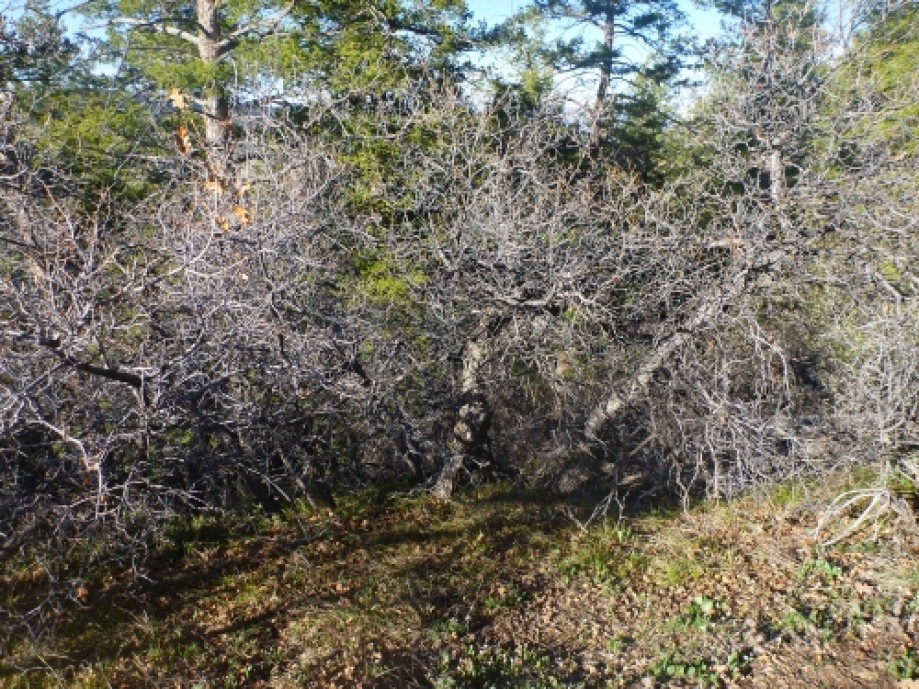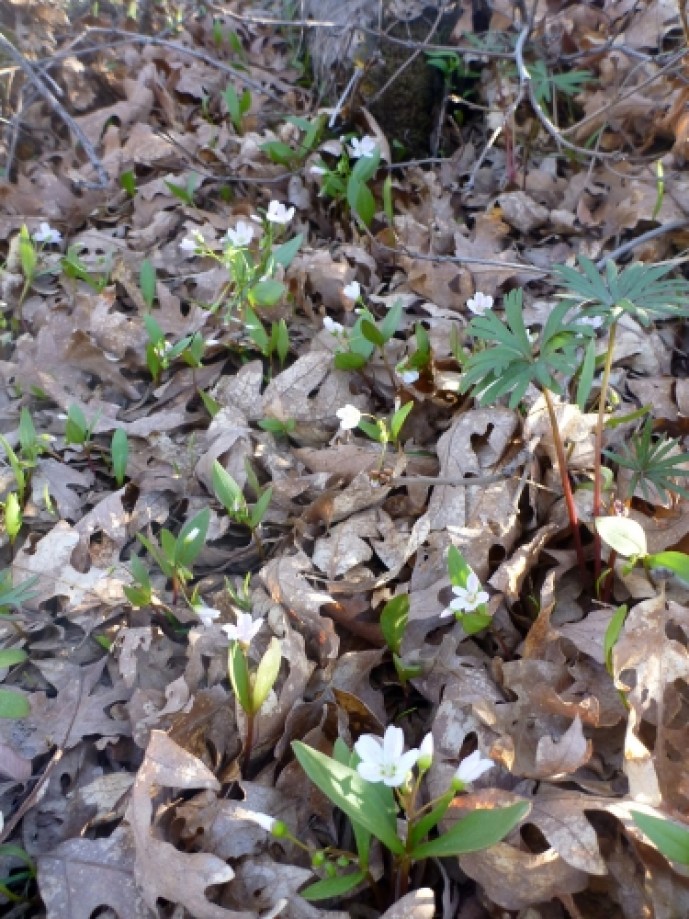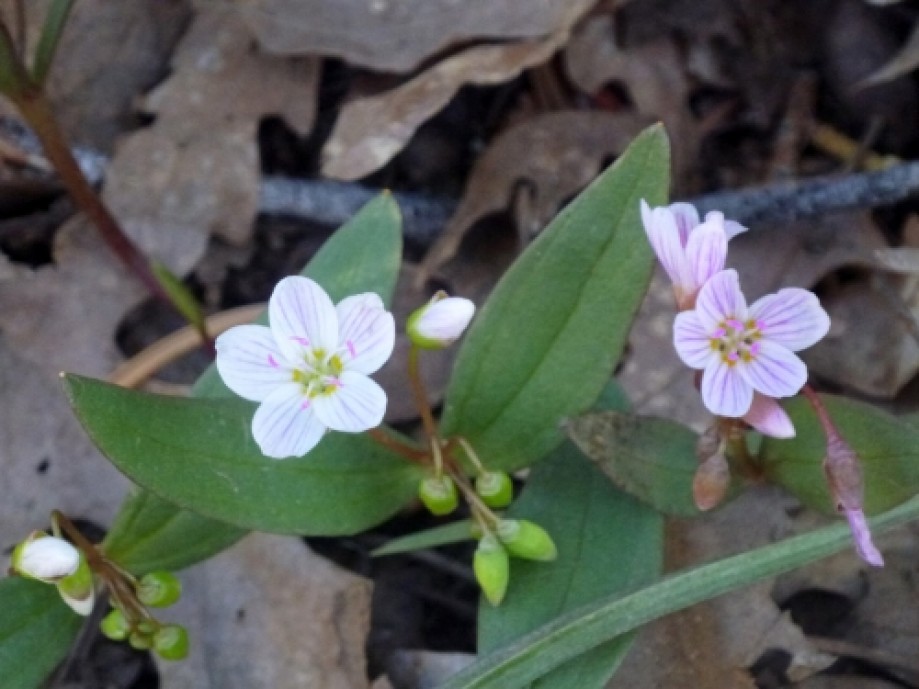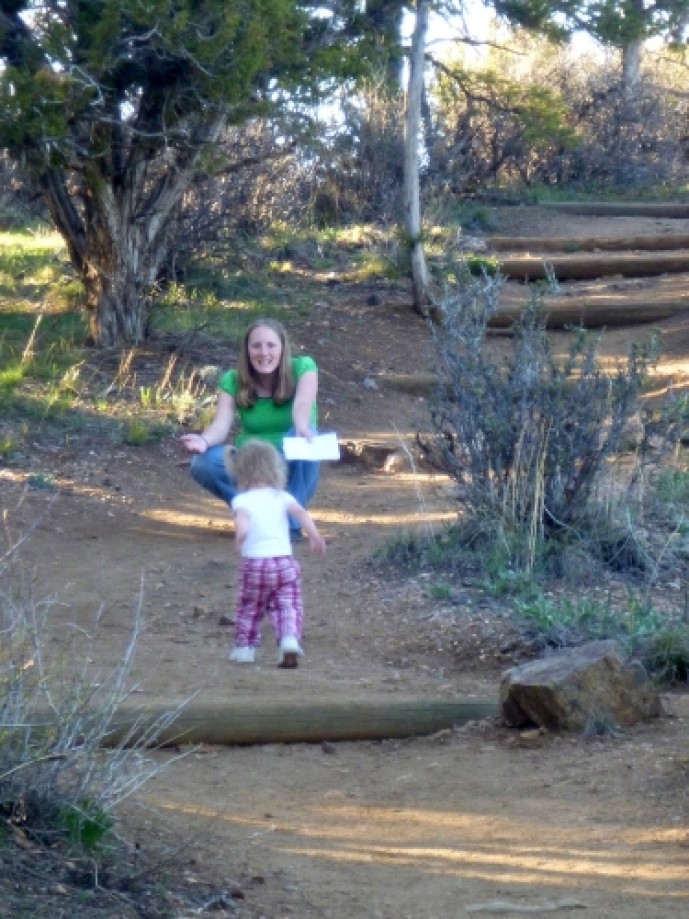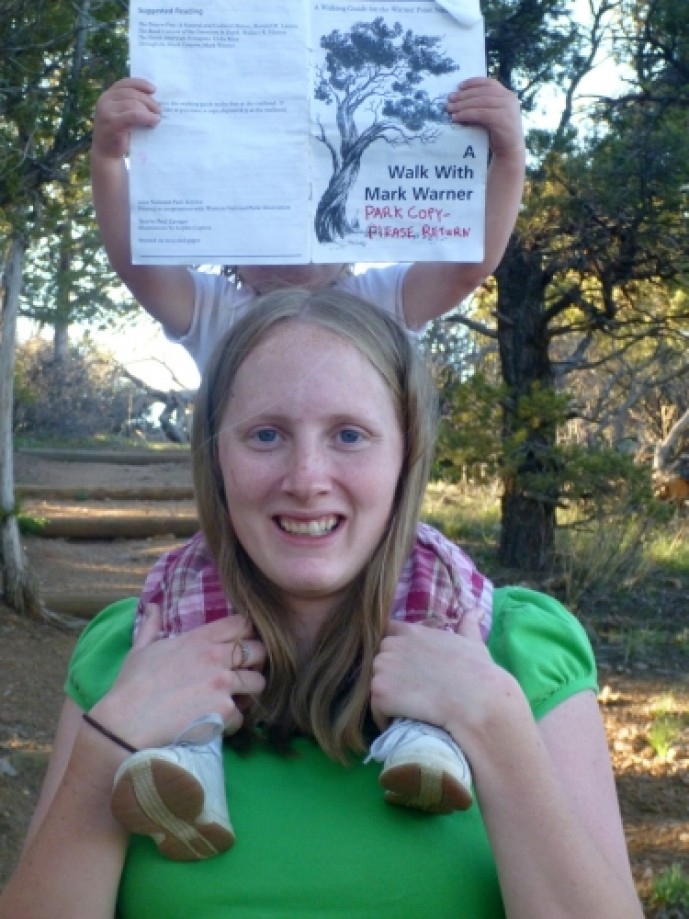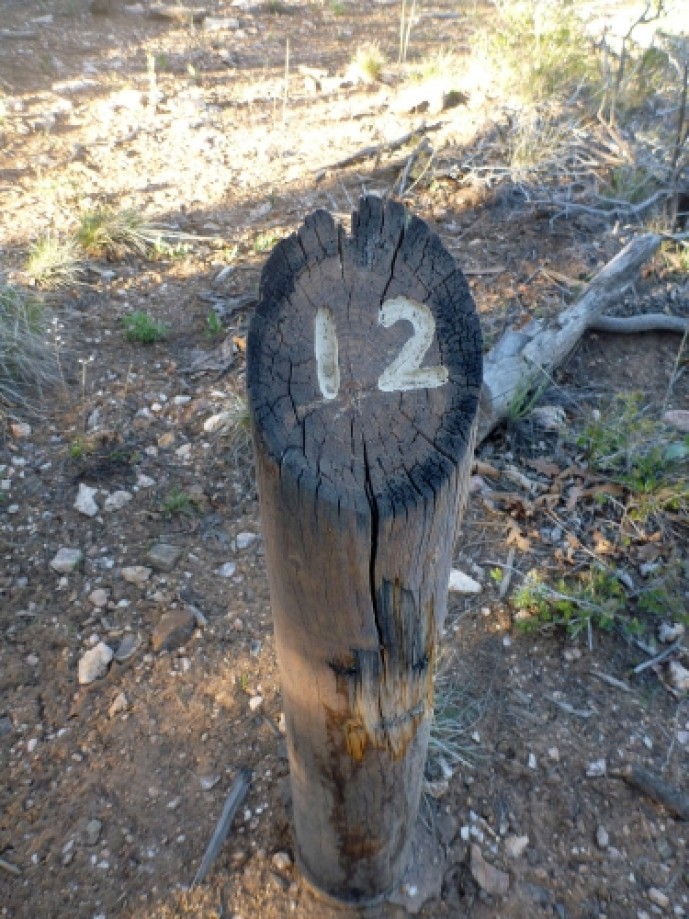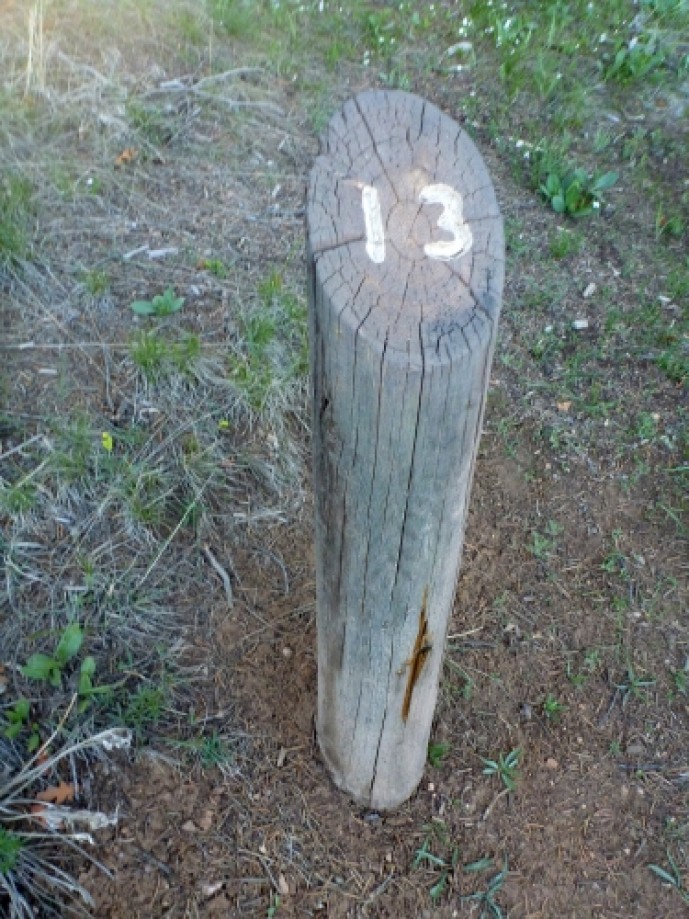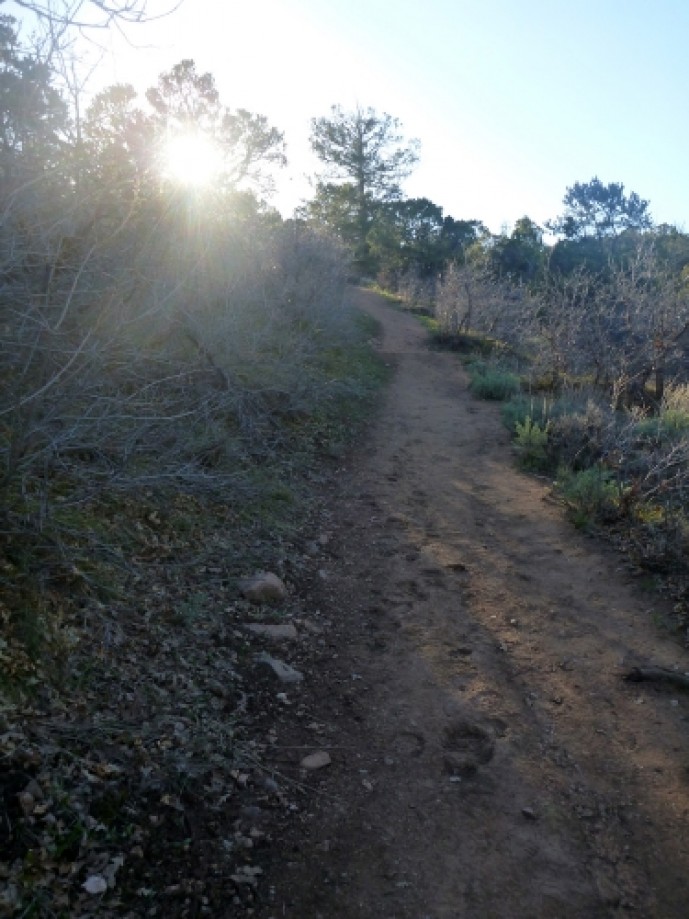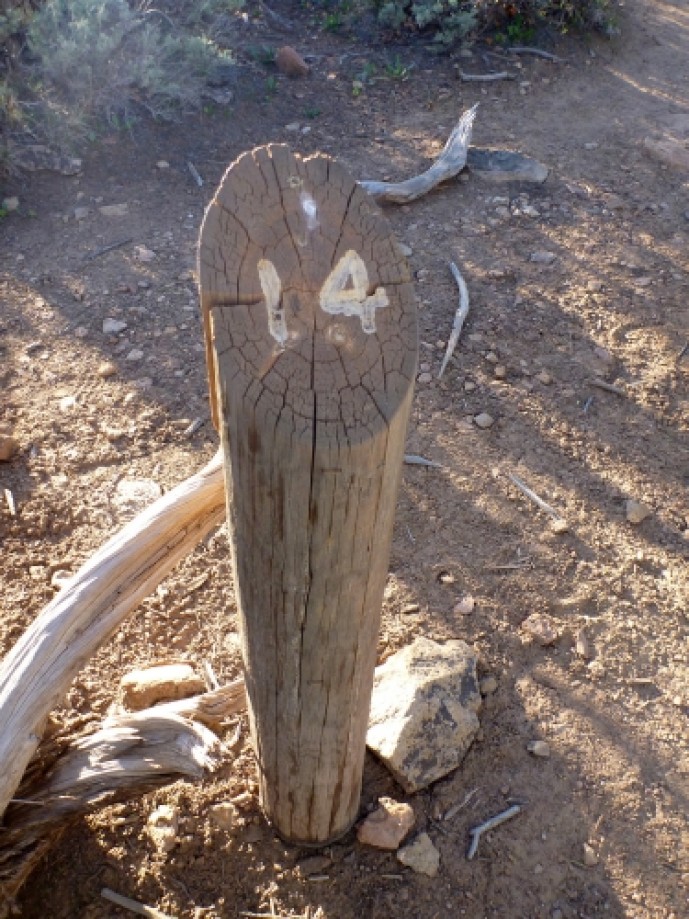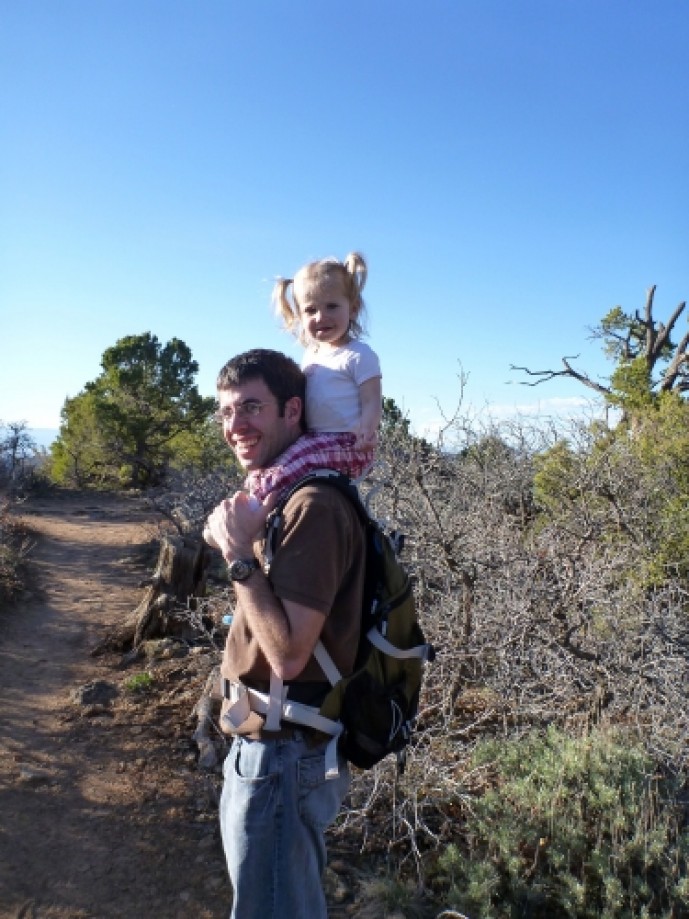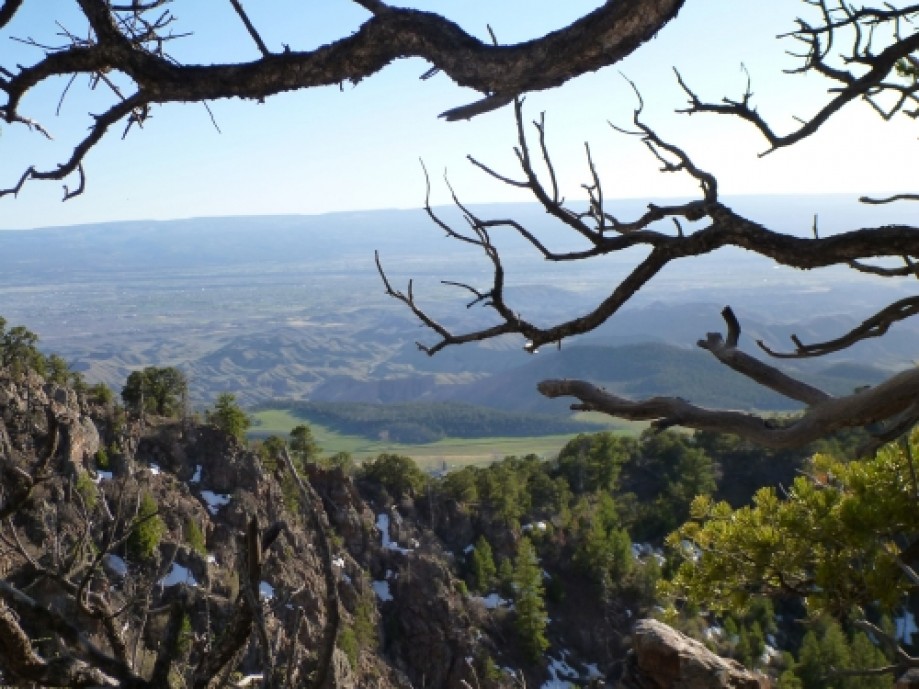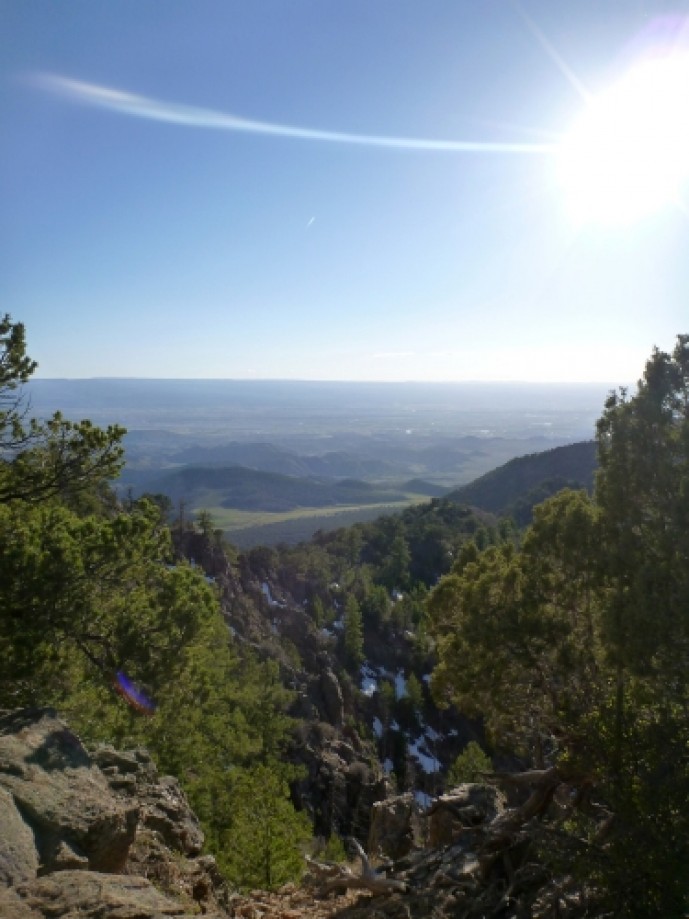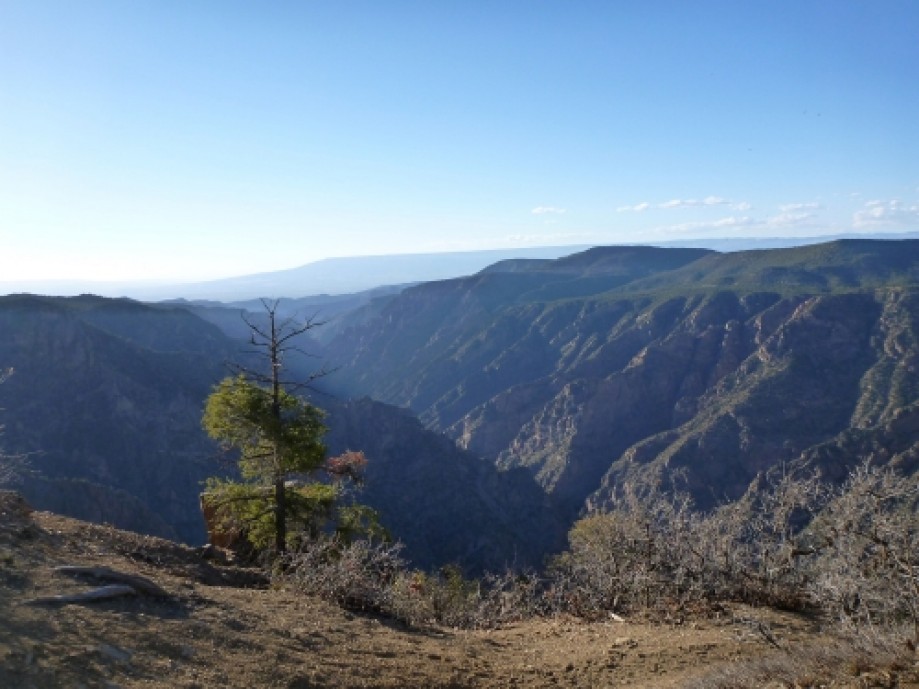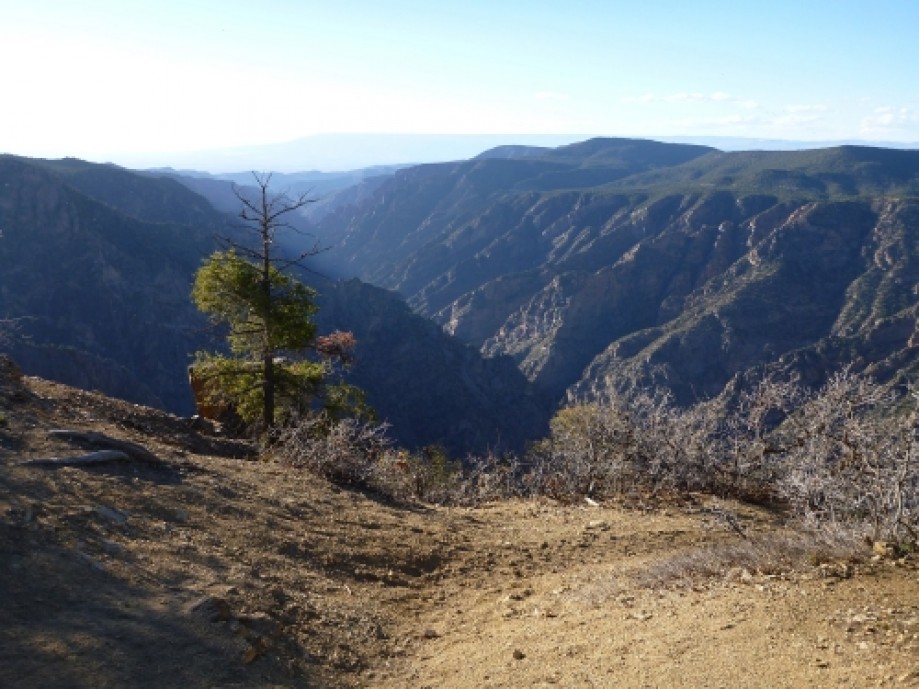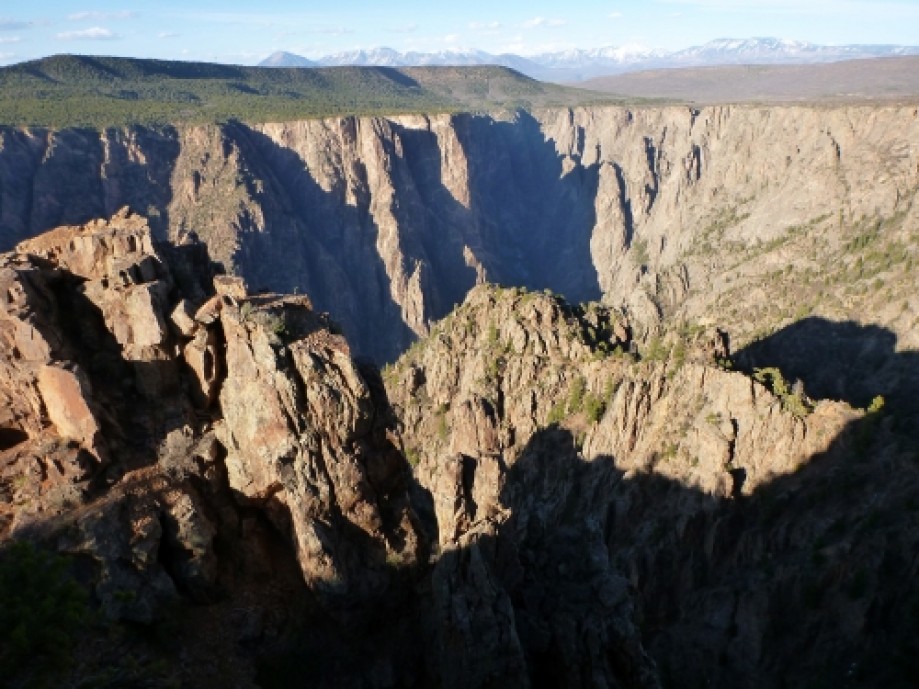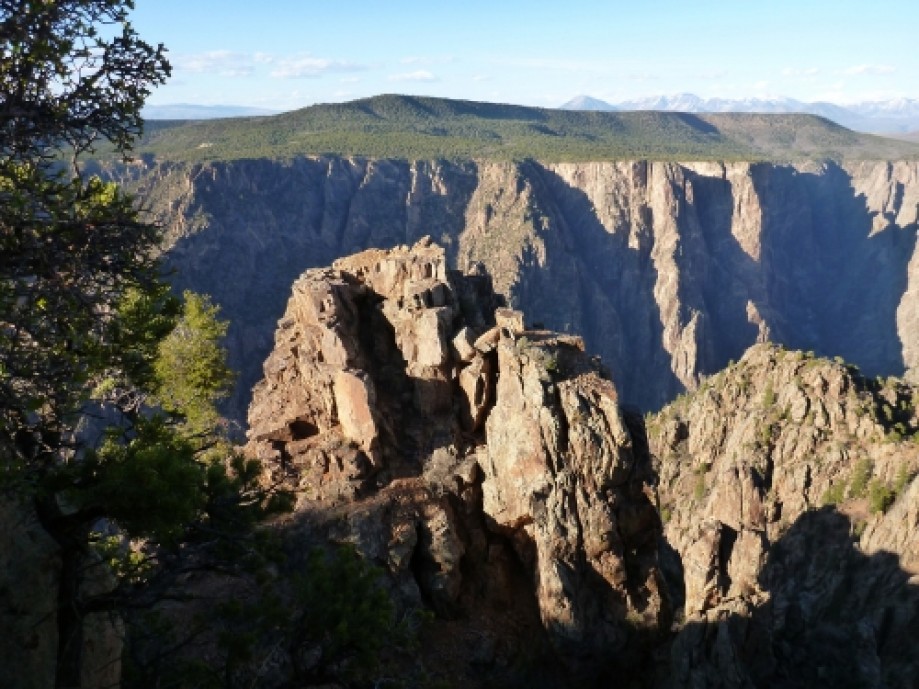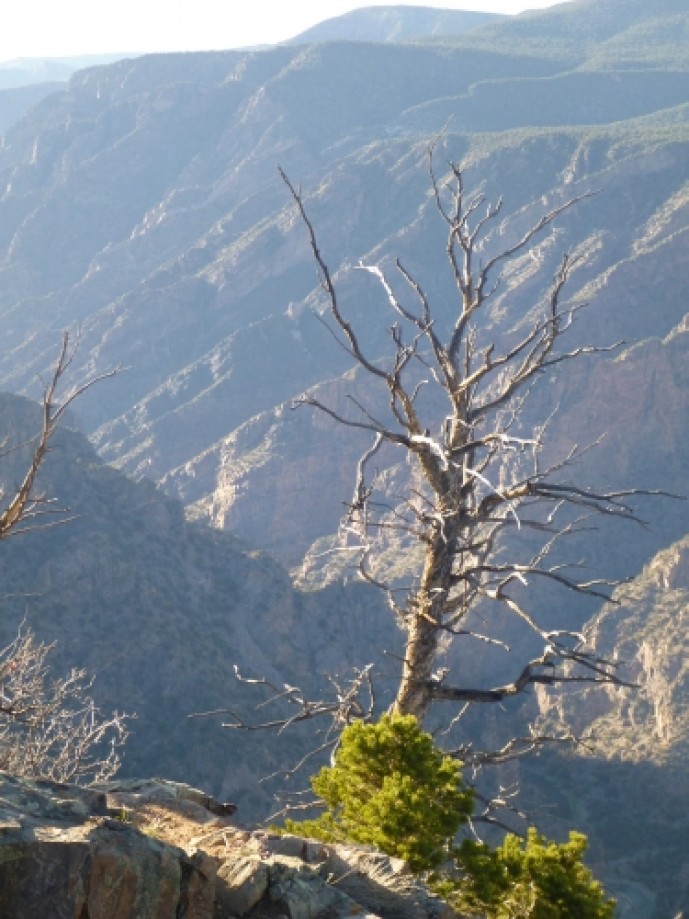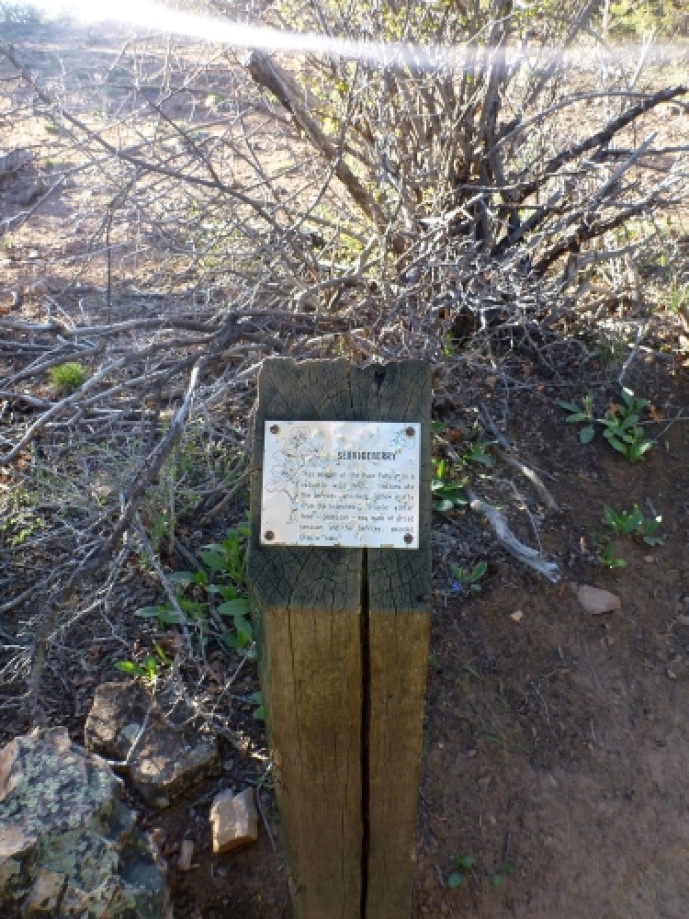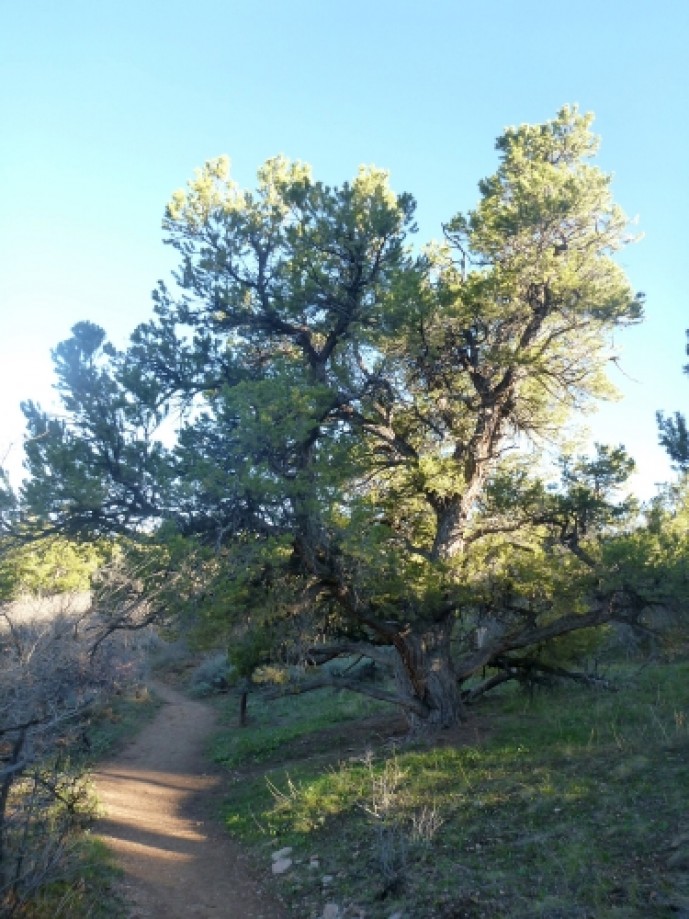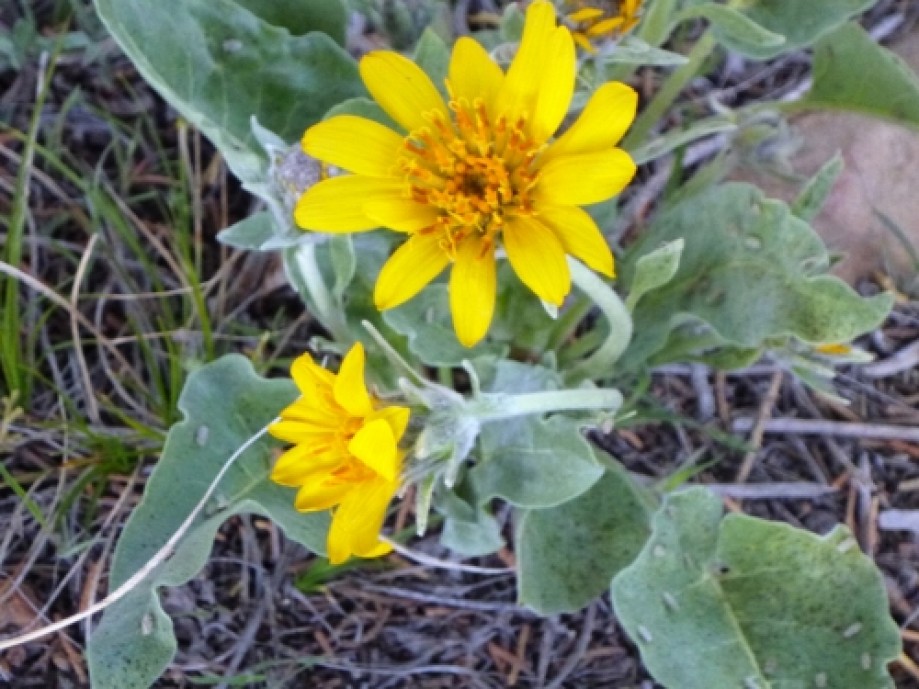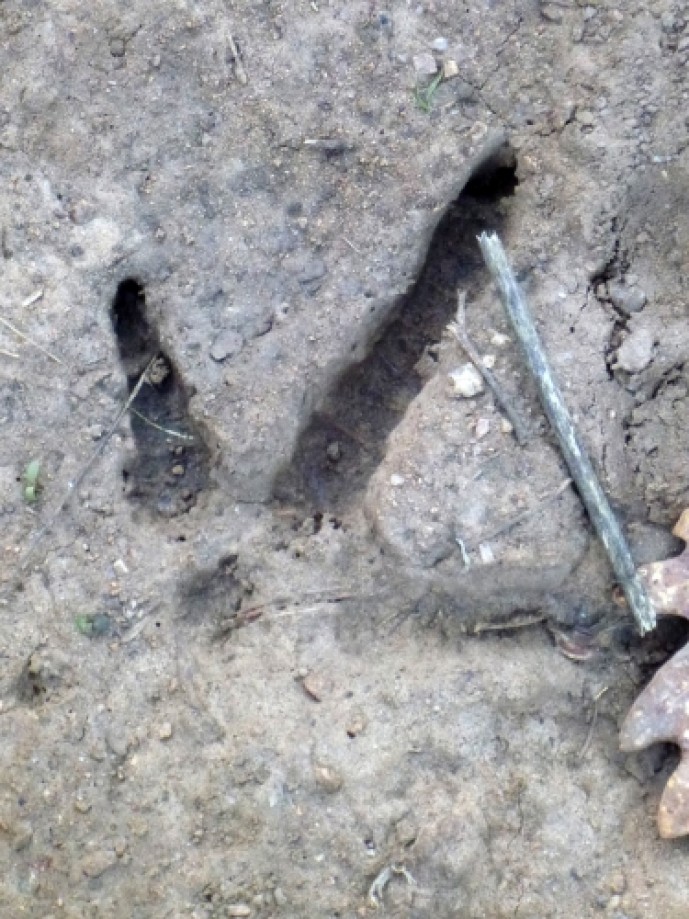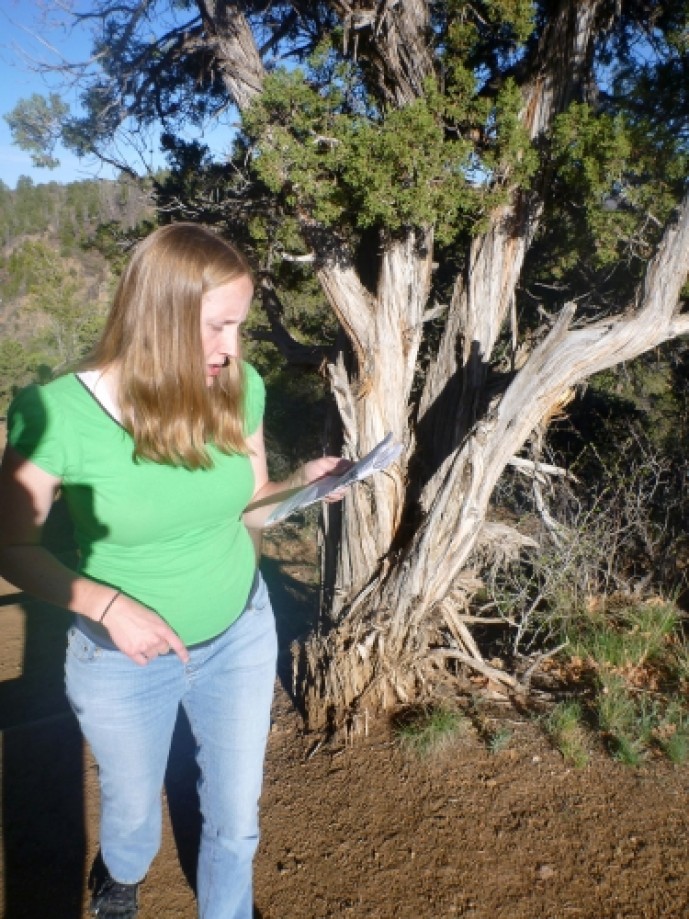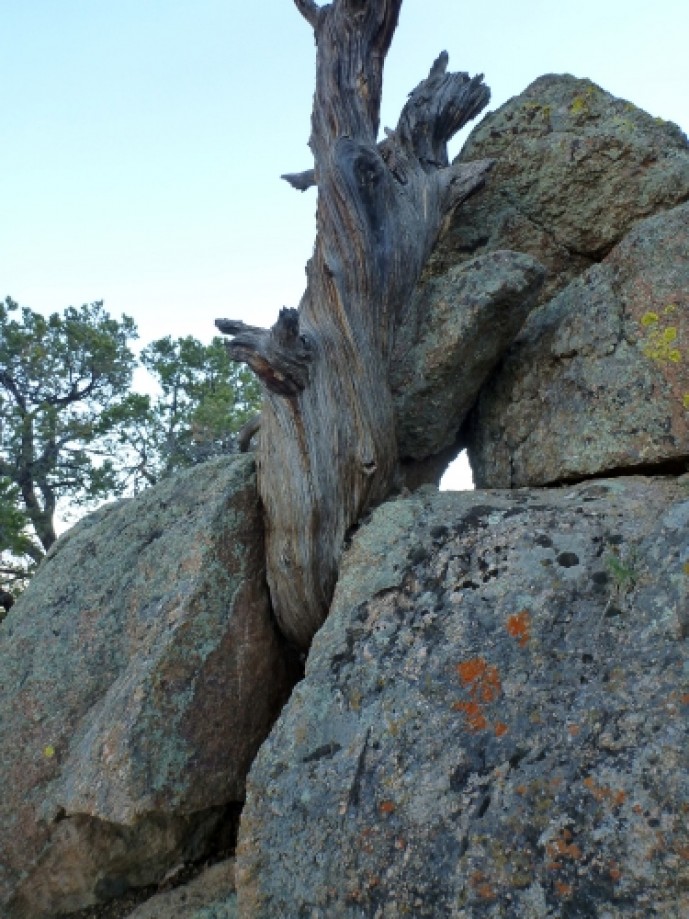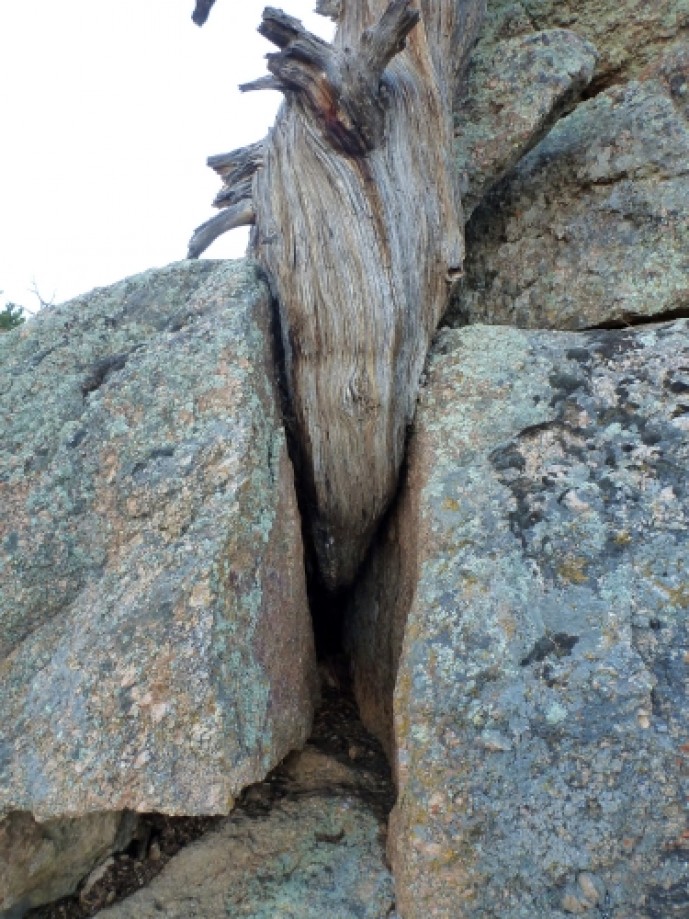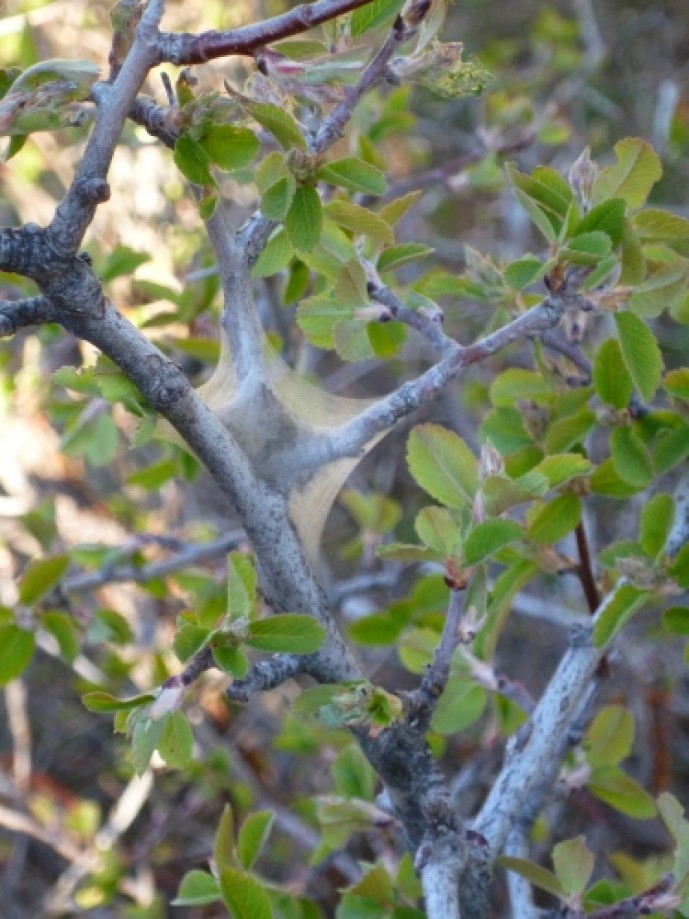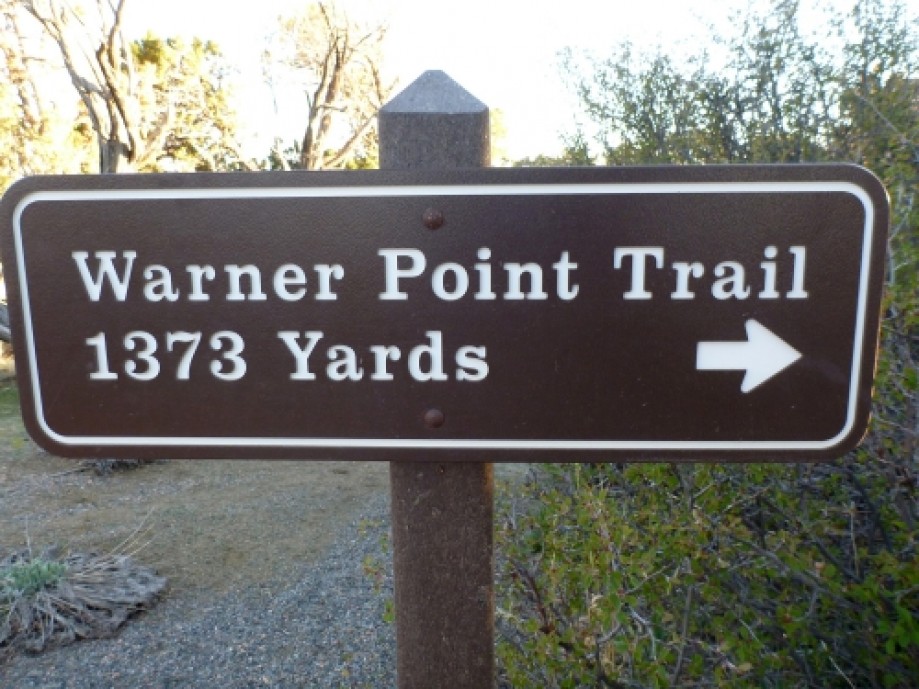Warner Point Nature Trail
Map Explore
Photos
Chart (Mouse wheel zooms in)
Story
The Warner Point Trail trailhead is located at High Point (38°33'44.91"N, 107°44'31.21"W), which has restrooms and picnic tables. The hike is 1373 yards (0.78 miles).This self-guided trail is a moderate 1.4-mile round-trip walk through a pleasant pinyon pine/juniper forest. It follows the ridge and has several short, steep up-and-down sections. Benches along the way offer welcome rest, especially if you are not accustomed to teh altitude. Your efforts will be rewarded by spectacular view of the surrounding valleys, mountain ranges, and lower Black Canyon.Allow about one and a half hours. Wear good footgear - avoid sandals, highheels, or smooth-soled shoes. Please stay on the trail as the rim drops off sharply in many places - a slip could mean a long fall.To lear more about what you see along the trail, take a leaflet. If you have no further use for it when you return, please replace it in the leaflet box for others to use.Amazing as it may seem, people do go into the canyon. So please do not throw rocks or anything else off the rim. Just one small pebble will reach a speed of 120 miles per hour, causing serious injury or death to anyone it hits.Thinking about going into the canyon yourself? See a ranger first. There are no established trails, so it would be easy to get into trouble without the proper information. A backcountry permit is required.For centuries, wild animals have lived well on food they forage for themselves. They do not need "help" from us. Pease resist your natural desire to feed the animals.The following information is from the Warner Point Nature Trail Guide, which was produced by the NPS. This trail guide may or may not be available at the trailhead.Marker 1The wide-open spaces of the western United States have always fired our imaginations. These lands have fueled our dreams and molded the character of America for more than two centuries. And we have a long history of preserving some of those places that still light that fire and compel us to take note of our connection to the natural world.Mark Warner felt that connection here. His dream was that others would also experience a sense of awe in this canyon, and his vision was that through a political process this place would be preserved in its natural state. Boundaries could be drawn and a park could be established.Warner was born and raised in Ohio, educated at Muskingum and Antioch Colleges, and came to western Colorado in 1917 to become pastor at the Montrose Presbyterian Church. Although many people contributed to the preservation of Black Canyon, it was Warner's vision and commitment that brought this about. Join him now for this walk to the overlook that bears his name.Marker 2Pinyon pines (Pinus edulis) and juniper trees (juniperus osteosperma) are slow growing high desert dwellers that dominate the land along this trail. The juniper distinguishes itself by the globular yellow-green foliage that differs from the sharp needles of the pine. It can grow in impossible conditions: Poor soil, intense heat, bitter cold, and prolonged drought, but time is an essential element. A seedling with a two-foot tap root could be several decades old. Yet the juniper is the most common tree from here to California, growing at elevations from 3,000 to 8,000 feet and higher. Age sets in, insects and parasites attack, the trees become contorted and gnarly. These trees are tough; really tough. They are steadfast reminders of a rugged life in the west.Marker 3We don’t usually pay much attention to dead trees. They are just there until, after many unobserved years go by, they collapse. But dead trees or snags like this are important to the cycle of life in the natural world. Raptors find elevated perches on limbs to survey the slopes for small rodents, while those rodents find hollows in snags for shelter. Deer may use them to sharpen antlers; bobcats and black bears sharpen their claws. This dead tree holds the soil in place while new young shrubs and trees get a start on life. Above all its nutrients eventually return to the earth.All of this from a snag that is usually unnoticed, by people at least.Marker 4It's easy to take in the pastoral fields out there. But tucked down at the bottom of the hill, right in front of you, is an open grassy flat; a fire scar slowly on the mend.A tree down there, struck by lightning, smoldered for a few hot days in July 1996. Strong afternoon winds then fanned the embers into a blaze, and whorls of fire swirled around the trees, completely engulfing them as the front of the flames charged up the draw to your left. Before 24 hours had gone by the fire was advancing on the entrance booth where you entered the park.But fire is a part of nature in western North America. The oak brush, in fact, has adapted to it fairly well But pinyons and junipers have not. It may be decades before you see new trees growing out there again.Marker 5Although wildflowers scatter bursts of color along this slope in the spring, the wild grasses will sprout and take over in early summer. The variety of grasses is important to this land.Even as the roots of all the grasses are woven together to hold the soil in place, so too, they hold a web of life together for nature. In fact, one third of the earth is covered in grasses, and they are a foundation for life.Foxtail barley, needle-and-thread, wheat and Indian rice grass; these and others serve a specific purpose in the rhythm of life along the rim. It's hard and impractical to measure the health of the natural world in a specific place. But the growth and diversity of the grasses are a good indication that, here at least, there is a harmony in nature.Marker 6The West Elk Mountains across the canyon were once active volcanoes, belching gasses and ash high into the atmosphere. Along with the ash came lava flows, and together the debris settled in layers over the land. Like the San Juan Mountains, the West Elks exploded for millions of years and piled thousands of feet of ash upon the region.With a liberal amount of time, the Gunnison River eroded away the ash and other underlying layers of rock. Two million years ago, the river began carving into the crystalline rock that makes up the walls of Black Canyon. Swollen by melting snow in springtime, and dwindling to a trickle in winter, the river carved age after age, into some of the oldest rock in North America.Marker 7Touch the bark of this old juniper. Feel its twisted, shaggy surface whipped by the wind and dried by the sun. The juniper has played a role in many traditions of people dating back thousands of years. The bark has been used in making rope, sandals and other clothing; the berries for food; the wood for timbers in prehistoric dwellings and as tools and utensils. More recently juniper fence posts dotted the west. The heartwood is tinted a deep red, which led early settlers to incorrectly call these trees cedars. For some folks, though the unforgettable fragrance of junipers wafting from campfires is a vital tradition ofthe great outdoors.Marker 8Consider this: All of the proteins needed by the human body can be found in the pinyon nut. Very few single food sources can do that ... and talk about calories! One pound of pinyon nuts has 2,880 calories, the same as in one pound of chocolate. They are high in polyunsaturated fat and rich in vitamins and minerals. No wonder they are still a traditional food source for American Indians.Look closely at the end of a branch. Pine cones start as tiny white domes on the buds of new branches in the summer. Pollination follows the next spring, followed by some summer growth, then the conelet lies dormant through that winter. Late the next summer, the glistening emerald cone, full of sap, stops growing. The cone dries and the scales open, exposing the nuts for dispersal. Count them up and you'll find that the pinyon pine needs almost 26 months to produce the next generation of seeds. Slow growing, indeed .Marker 9Ooooh, something has been chewing on those trees, to your left. Porcupines eat the inner bark of trees in the winter when their summer food supply of leaves, seeds and forbs disappears. The inner bark, called cambium, is rich in energy.How rich? Known for being loaded with carbohydrates, it is a high-energy food source. Western tribes, including the Utes, followed the porcupine's lead and stripped bark from various trees to get the inner lining for food. The Utes were careful to take only a little from any single tree. Stripping the bark in a ring around the tree will kill it because the inner bark brings water and nutrients from the roots up to the branches. Moving from tree to tree allowed them a continued source of the cambium.Porcupines, of course, may feed on a single tree, sometimes killing it. Not many predators will take them on, though, especially since they sport more than 30,000 quills on their bodies. Parasites can keep the porcupine in check, and cougars will take them on when really hungry. Otherwise, it's hard to think of an animal that has made itself as unappetizing ... except maybe the skunk.Marker 10The 800-acre fire scar is pretty evident from here. Fire can be terrifying! Handled in an appropriate way, fire can be of great benefit, but when out of control it can scare us out of our wits. At this fire, the winds that day were whipping the blaze into a blast furnace, and the billowing smoke that towered hundreds of feet above the mesa struck fear into the hearts of folks that were stuck on the south rim. In the end, a cold front bringing light showers doused the fire, and after a week the park was reopened.Firefighters can't always count on a rain shower to help them out. So local, state or federal agencies will set ground fires, when conditions are right, to burn the underbrush. Such fires, called controlled burns, can imitate prehistoric fires and prevent catastrophic infernosMarker 11These tall conifers are Douglas fir trees, which are common throughout the west and flourish in moist locations where they grow much larger. You may have noticed that they do not grow on the south side of this ridge. The climate on the north facing, or canyon side, is a little cooler and holds moisture longer. These conditions allow the Douglas fir to populate the south rim slopes.These same conditions favor the Gambel oak, too. Although it may be hard to imagine, this tree is a close relative of the mighty eastern white oak. The Gambel oak is stunted and spindly in part because the root system is similar to that of a potato (called a tuber). Many stems can shoot up from the root system, which causes the tree to grow as a thicket. That, in turn, causes the shrubby appearance and leads to the more typical name, scrub oak.Marker 12Perhaps one of the more delightful features of hiking this trail is to spot some of the birds that live here. I hope you have had that chance. Smaller birds, like the Pinyon Jay and Clark's Nutcracker, commonly inhabit these woodlands. They will eat almost anything, but they particularly relish the pine nuts, especially through the winter.In the fall they will peck the cones apart, filling and stretching their throat with up to twenty nuts at a time. The seeds are then stored on the ground near the nest. The birds separate the good seeds from the bad by color, weight Does the pinyon tree get anything out of this? As it turns out, the pine nut is the largest seed generated by any tree in the American southwest. Once produced, they don't spread very far. The jays normally leave a few nuts behind in the soil, and those not eaten by rodents may sprout. The birds disperse the pinyon seeds and spread its range.Marker 13Now THAT is an old pinyon tree. And it's just the type of grandparent tree that fascinated Mark Warner. In fact, the groves of pinyon pine along this ridge are some of the oldest of their species. The Laboratory of Tree-Ring Research at the University of Arizona discovered this when testing some trees in the 1940s and 60s.Information from the tree rings revealed that the groves at Warner and High Points, and some on the north rim, are in the range of 750 to 850 years old. These trees were seedlings when the Ancestral Puebloans built the dwellings at Mesa Verde, or when the Magna Carta was signed in England (1215).Yet growing old with grace is difficult for any living thing. Young pinyons thrive in the shade of older ones, waiting until the aged trees pass on before fully realizing their potential. We all have our youth, middle age and older years on this earth, but all generations need to fit together for a healthy society. The trees, with this same rhythm of life, are perhaps among the marvels that seized Warner's imagination.Marker 14Mark Warner's efforts at preserving the Black Canyon were realized in the creation of a National Monument by the signature of President Herbert Hoover in 1933. President William Clinton signed legislation 66 years later expanding the boundary and renaming the Black Canyon as a National Park.If tradition is the enemy of progress, then could it be that the tradition of National Parks is in conflict with the greater part of our society? The things that we save define us as a nation, and it is through our traditions that we find strength in our values as a people. Some have said that our national parks portray us at our best in a national process of sharing and commemorating those values. In fact, nations around the world have followed this custom and have also established national parks.The view ahead is one of those places where we come face to face with this tradition. We protect these places to remind us of those values that distinguish our country, and we cherish them for the future so that those values will live on.
This trip report is from:
http://dyeclan.com/outdooractivities/hiking/warnerpointtrail/Other trips at: http://dyeclan.com/outdooractivities/
This trip report is from:
http://dyeclan.com/outdooractivities/hiking/warnerpointtrail/Other trips at: http://dyeclan.com/outdooractivities/
